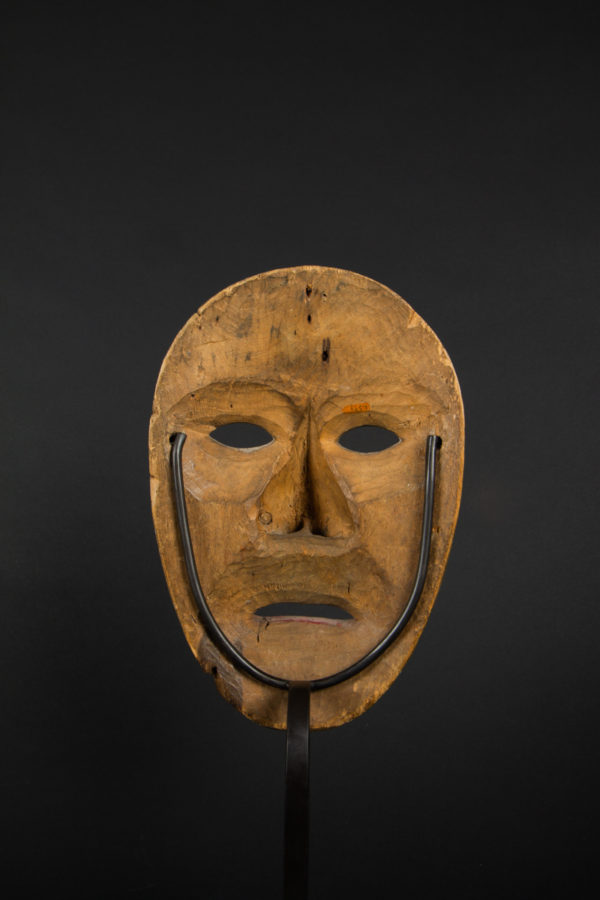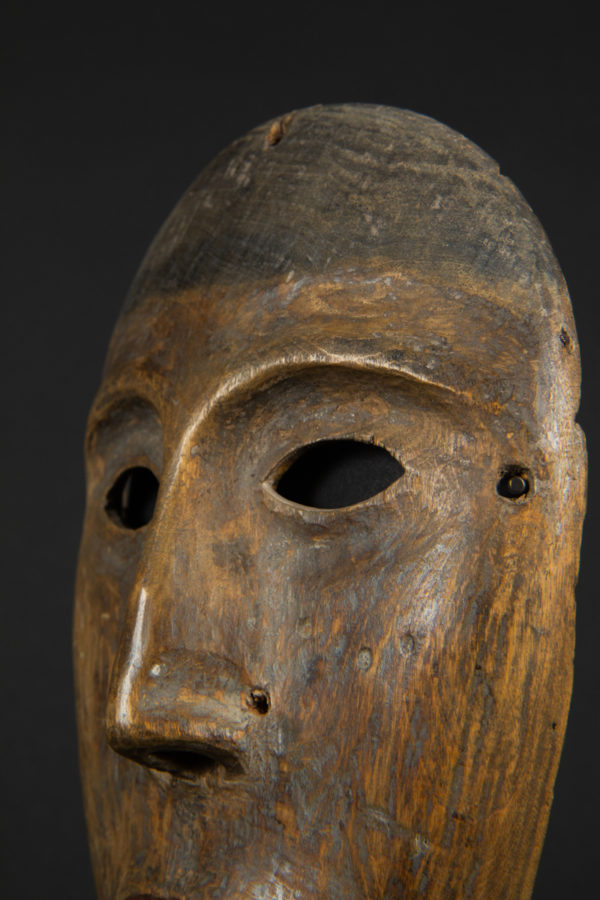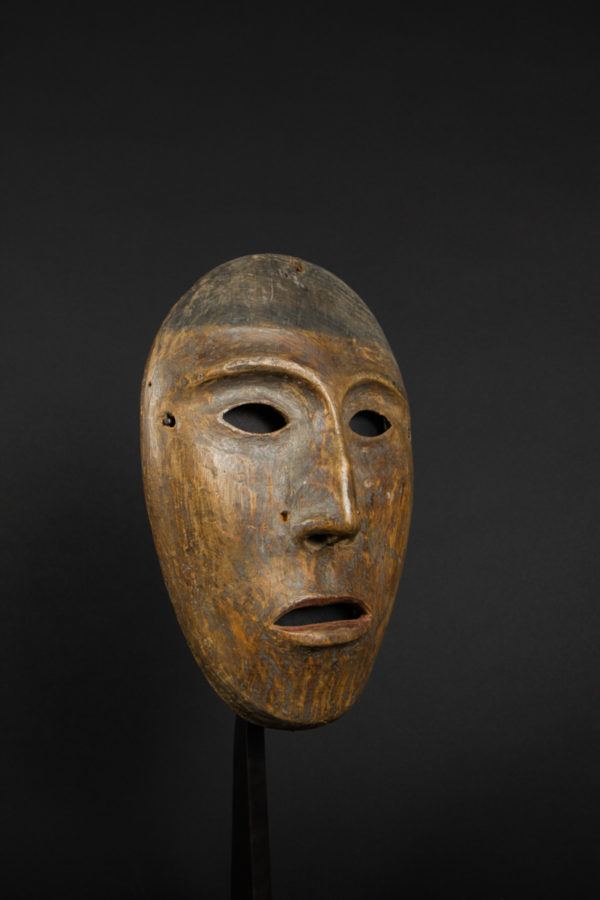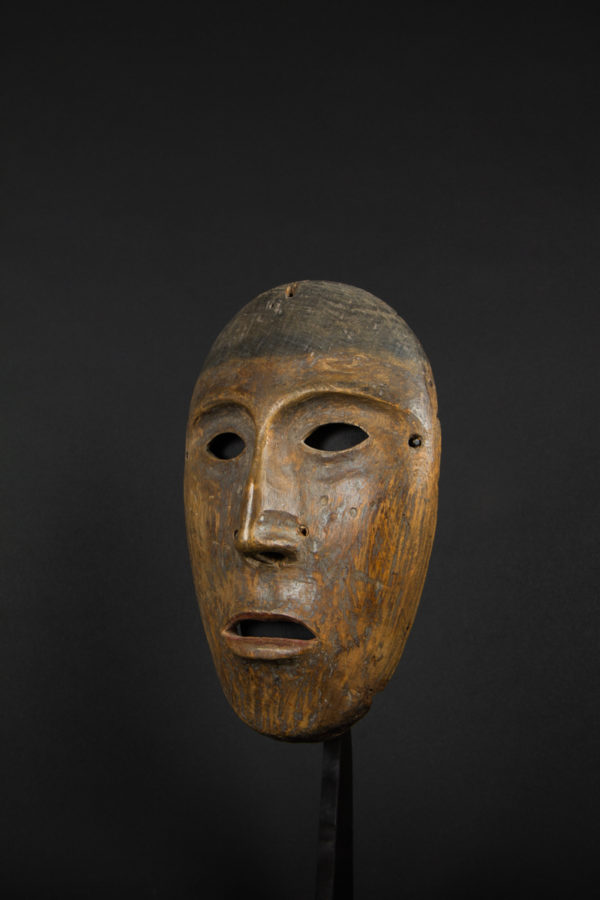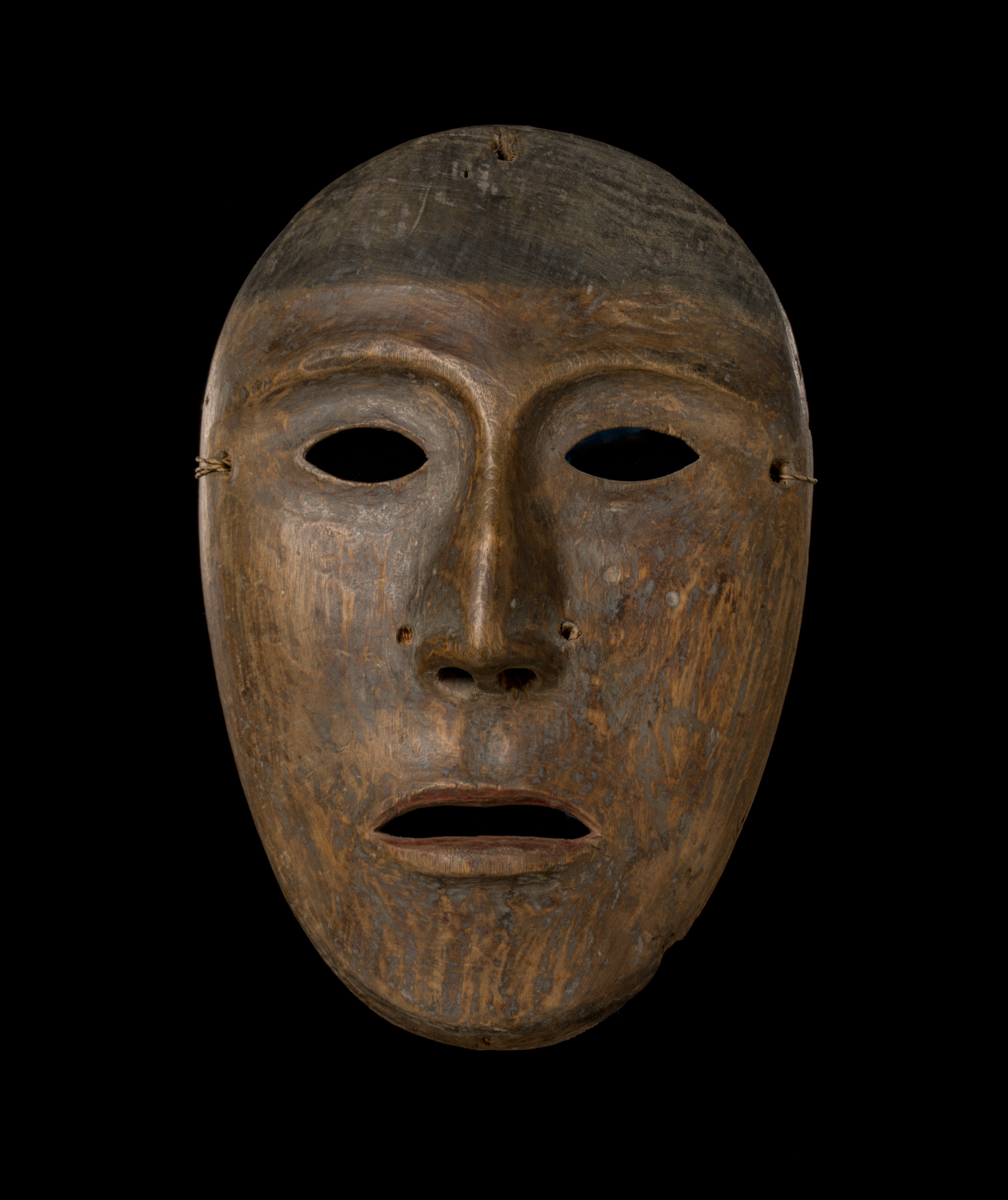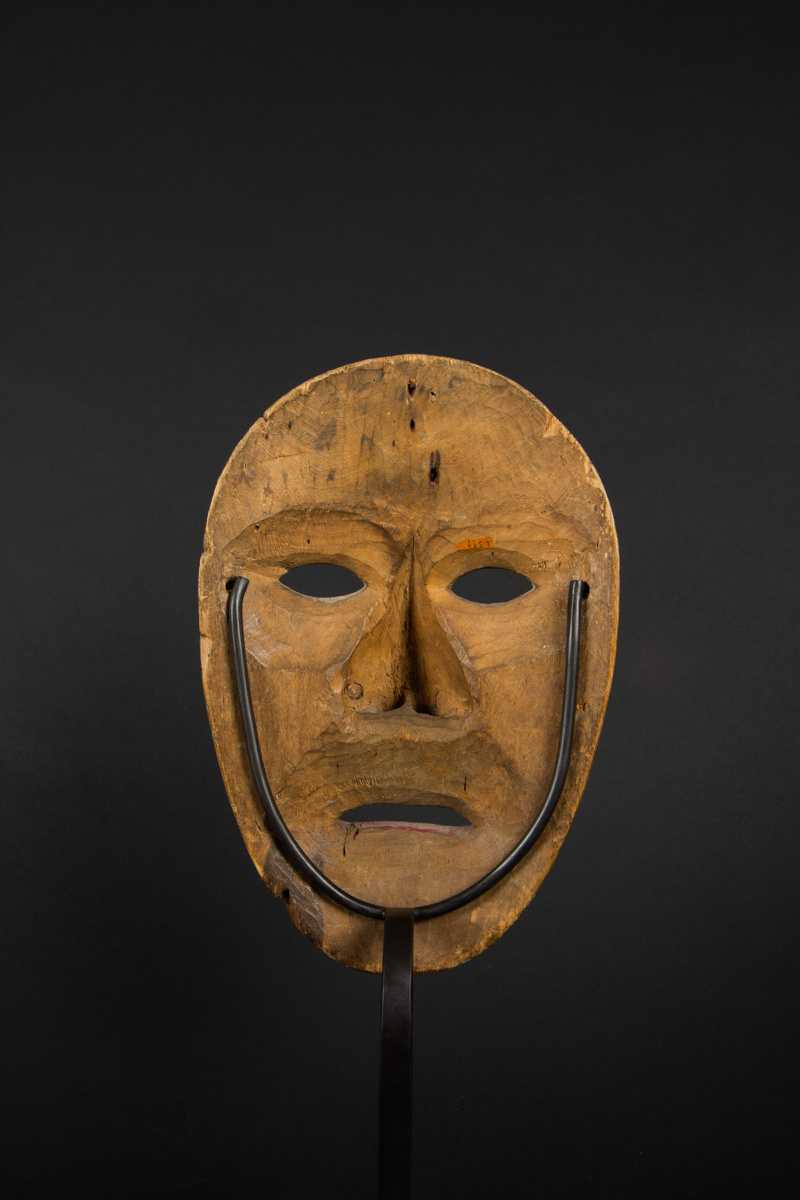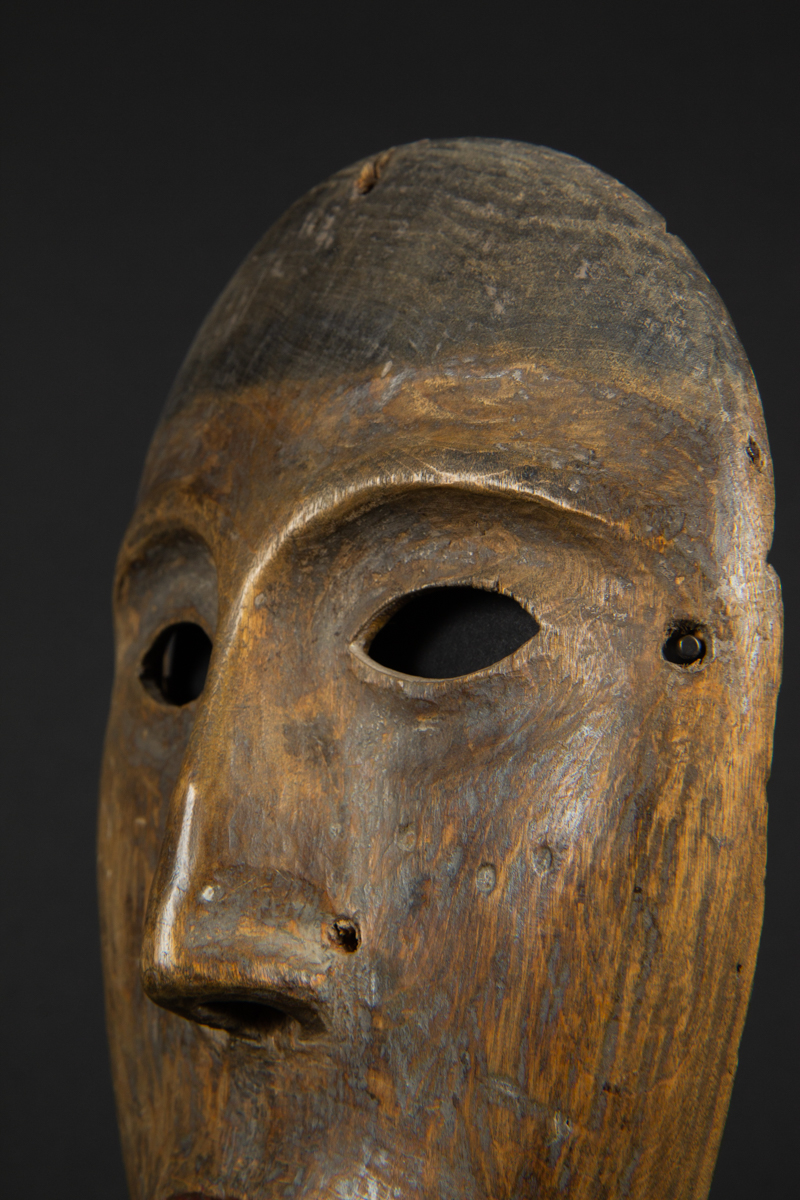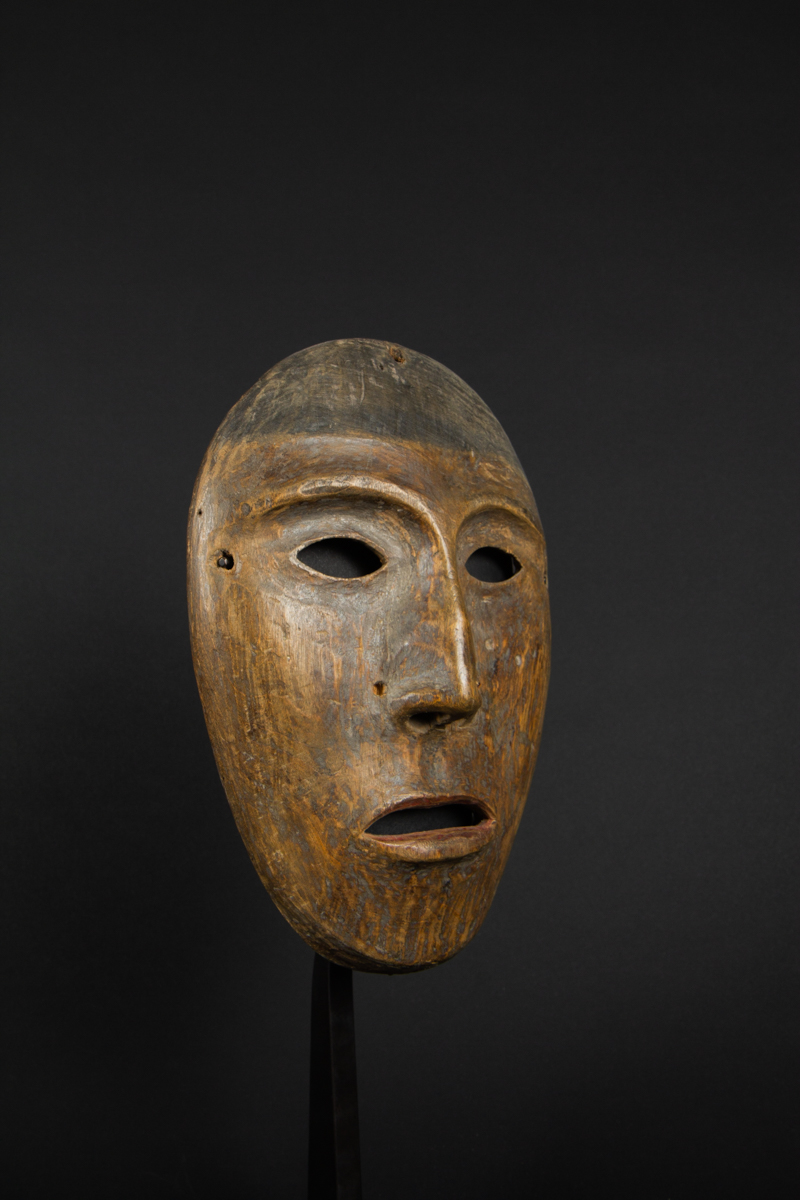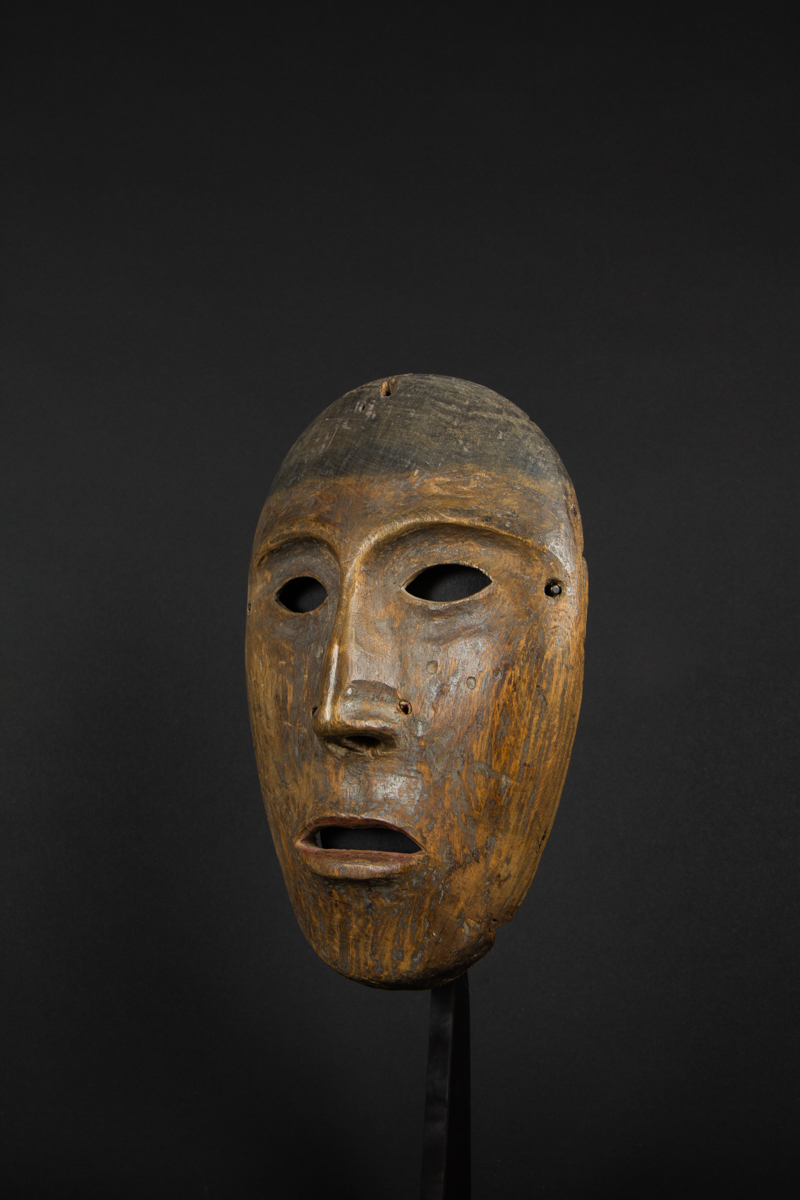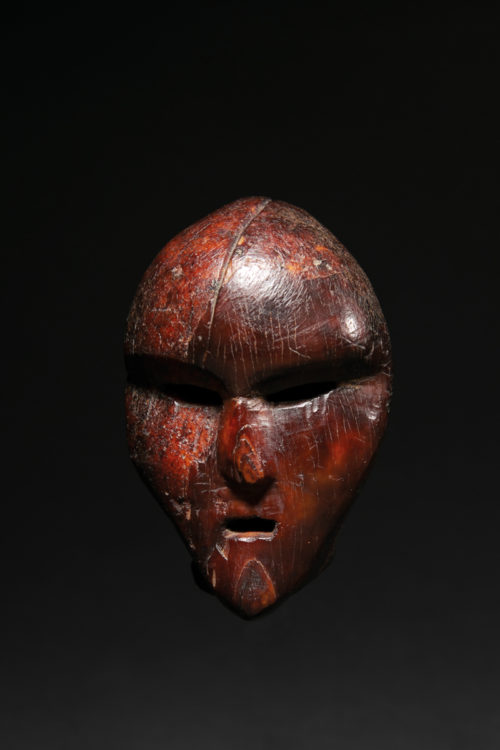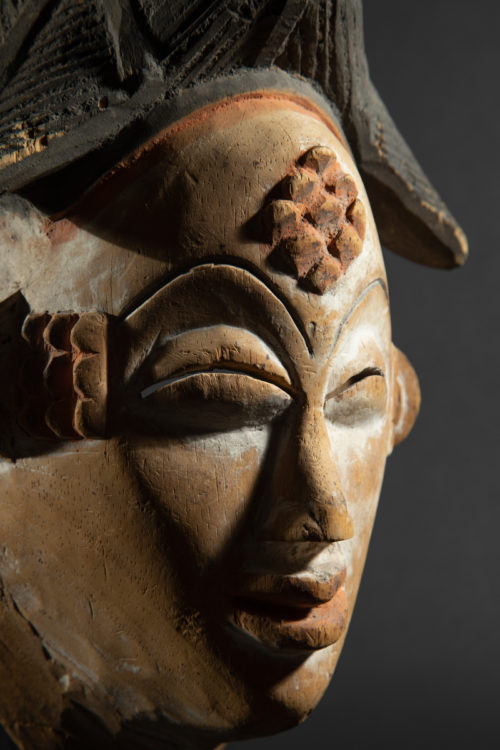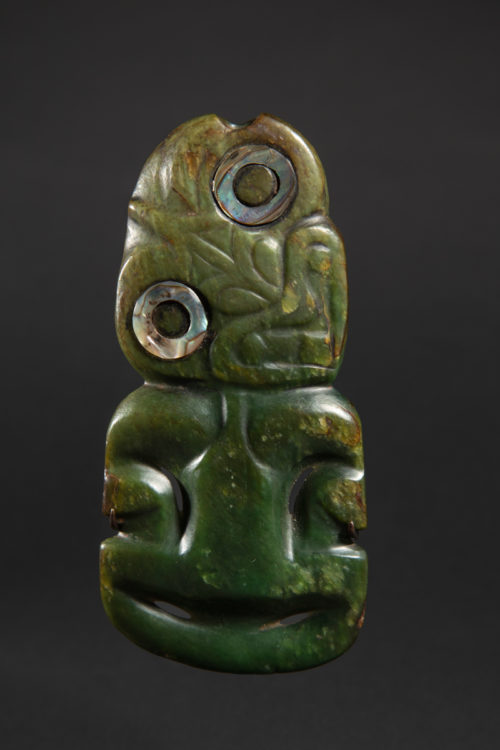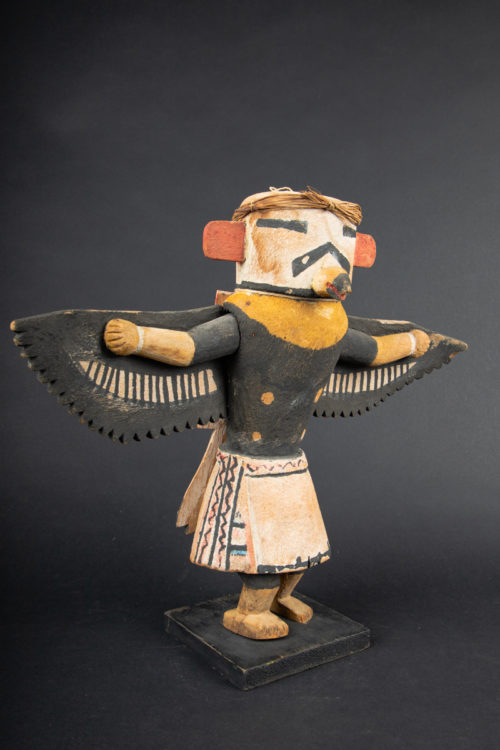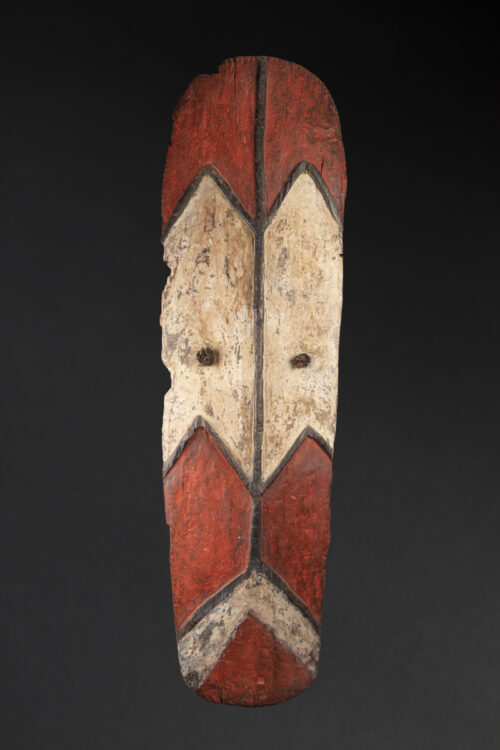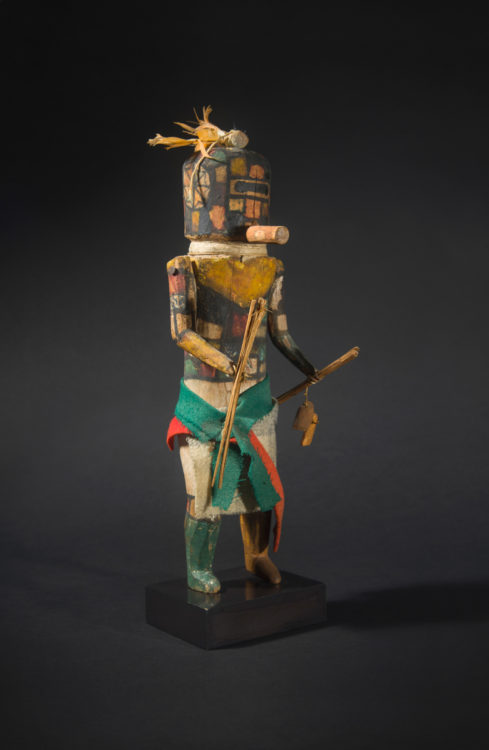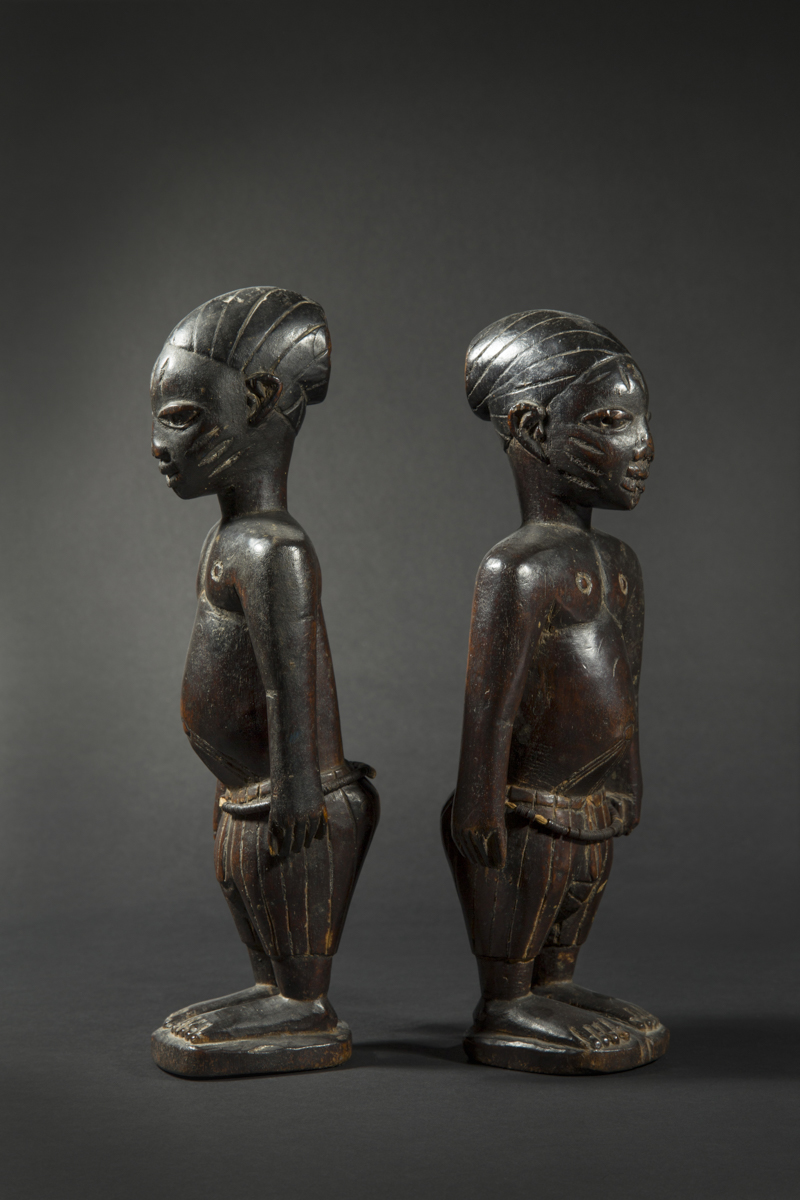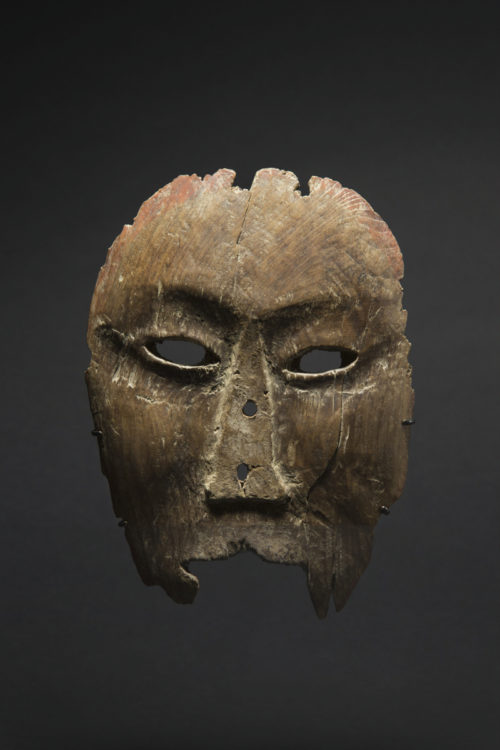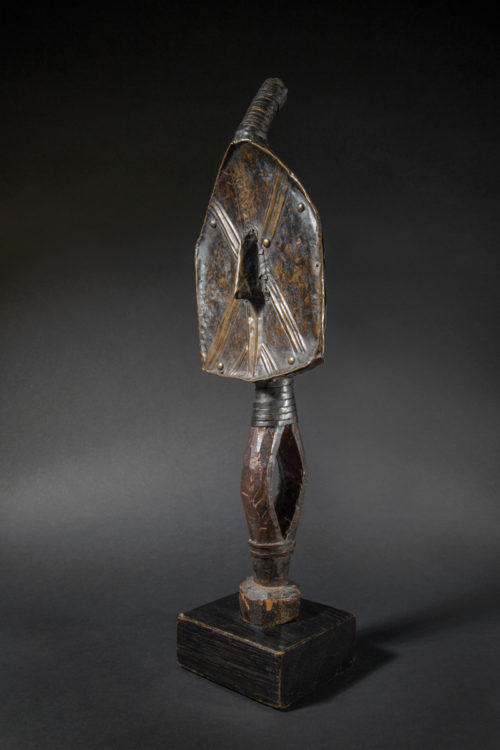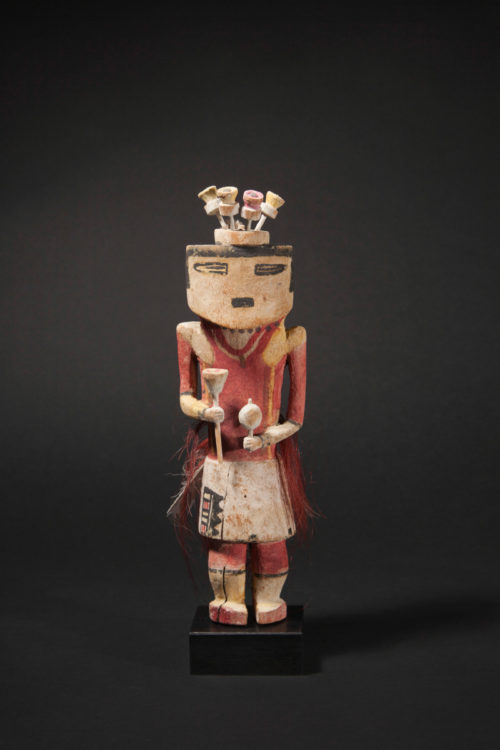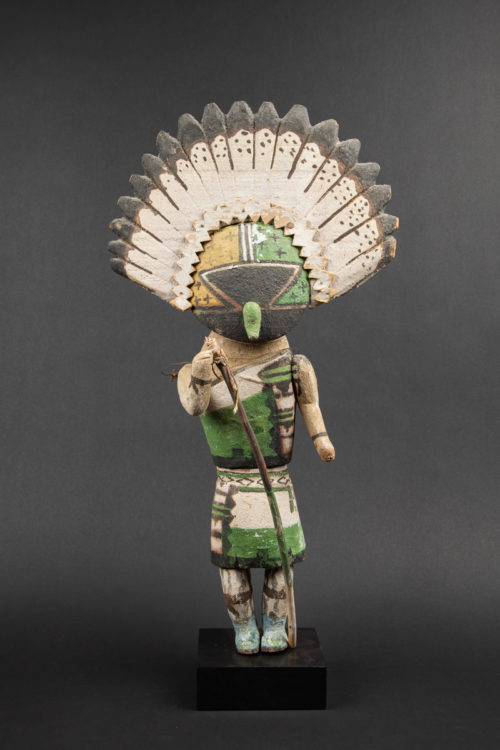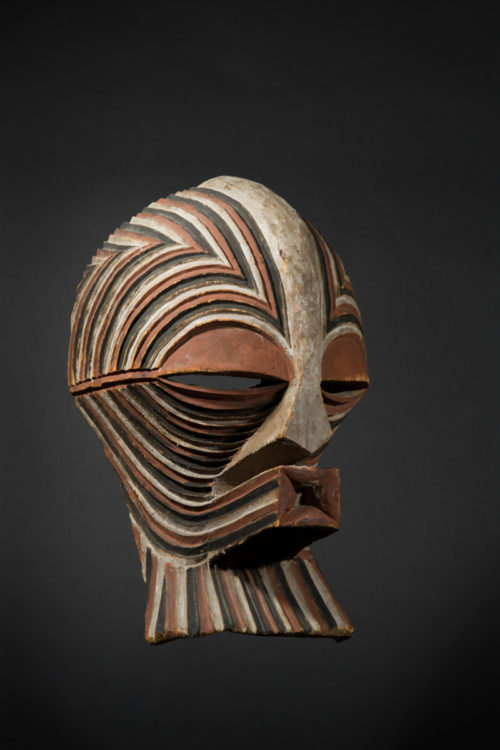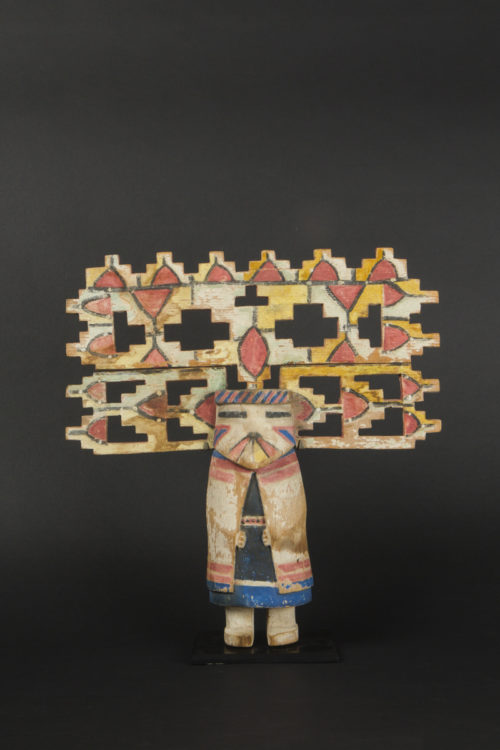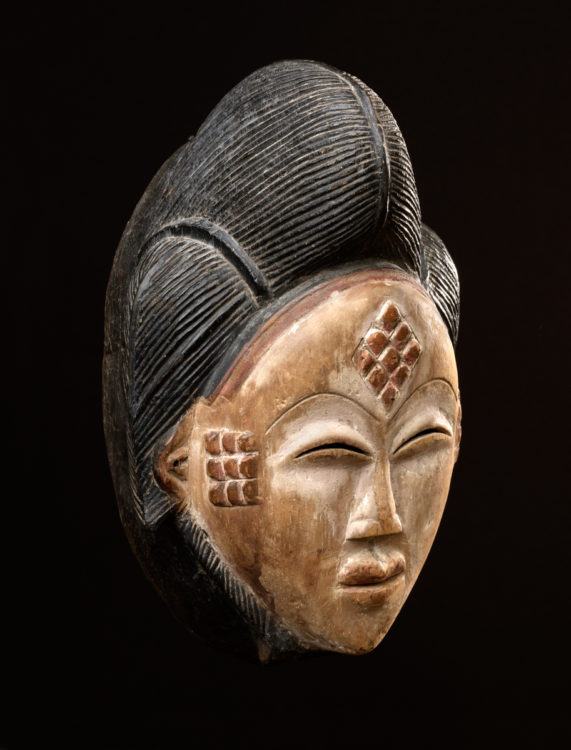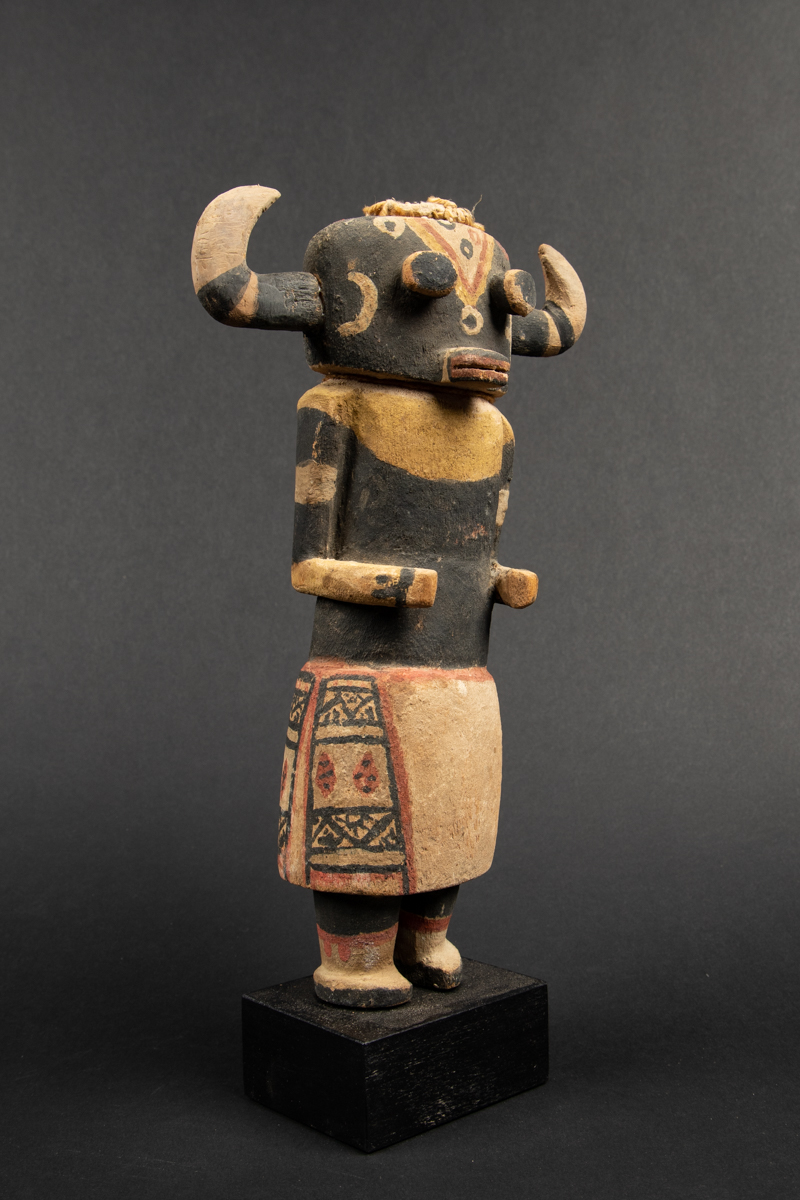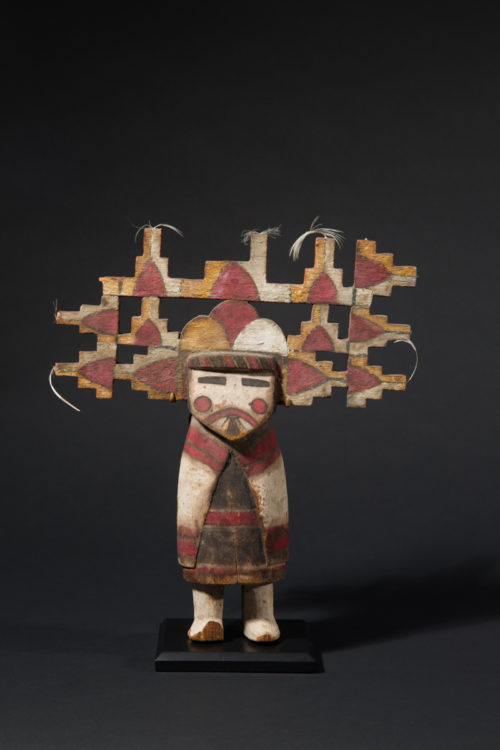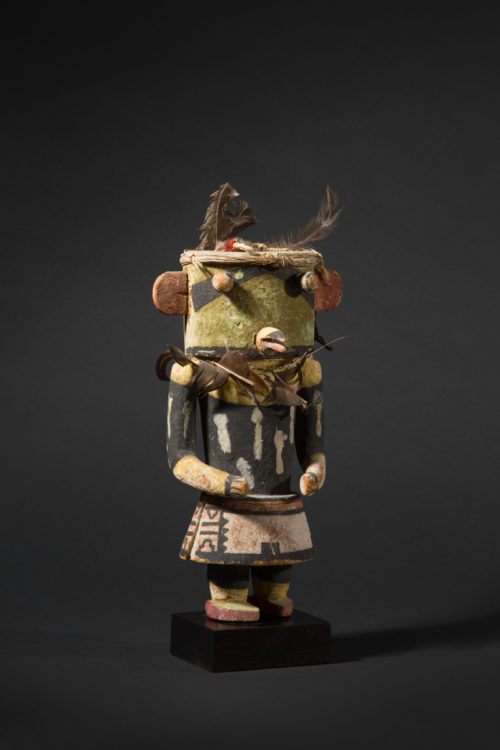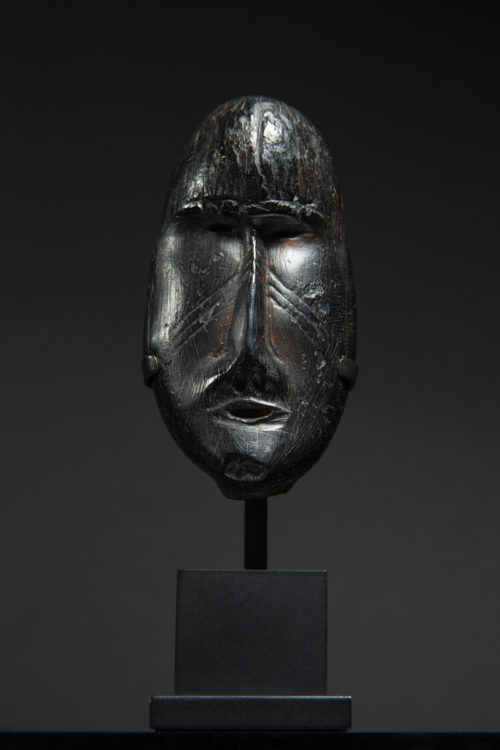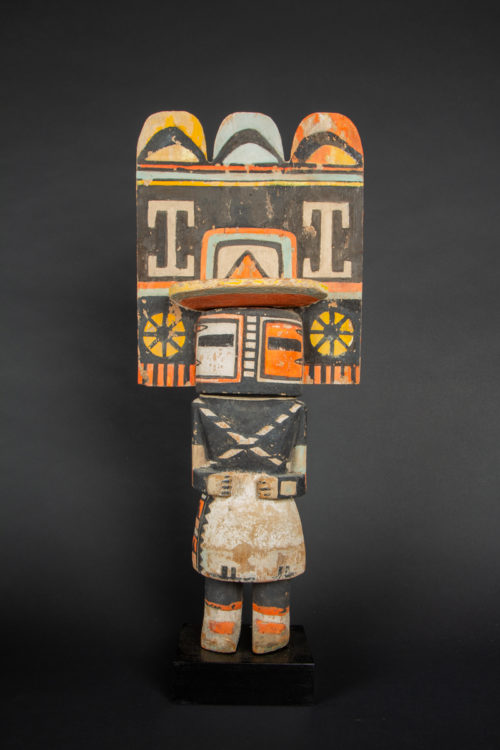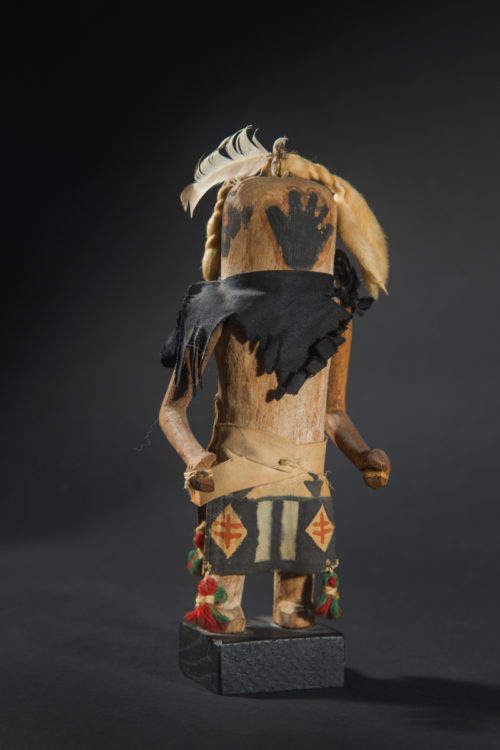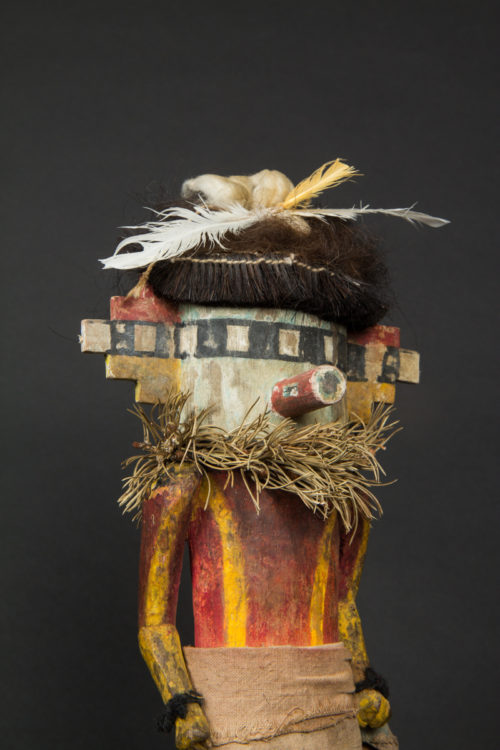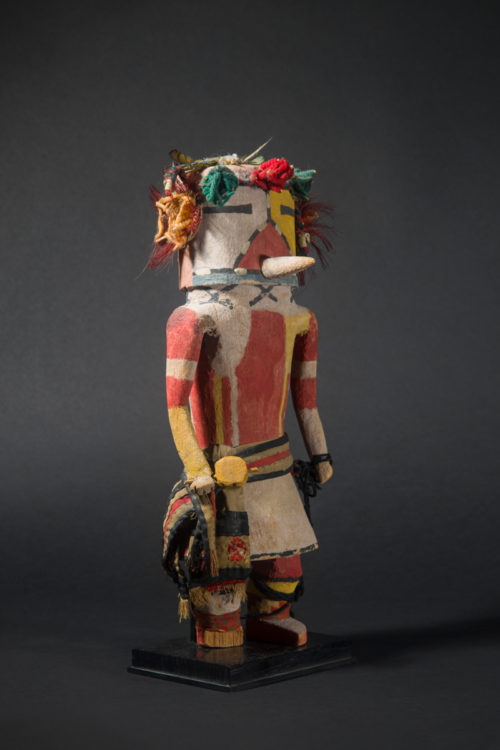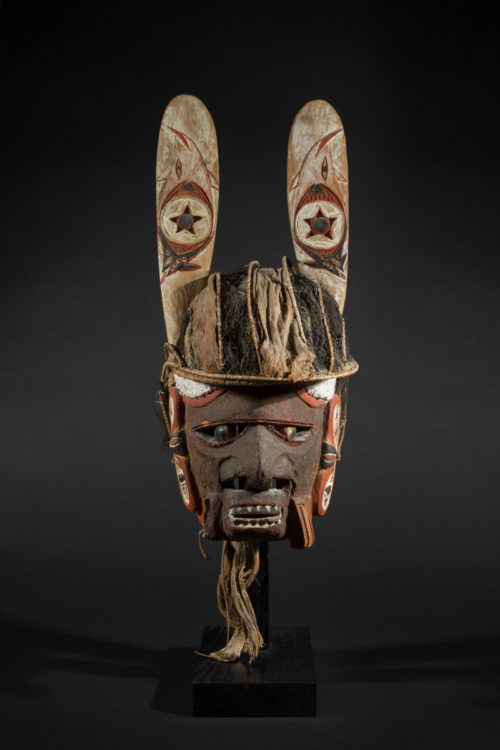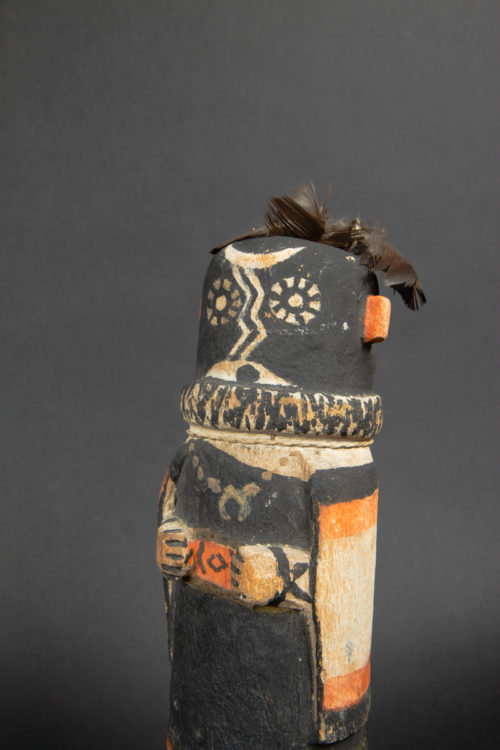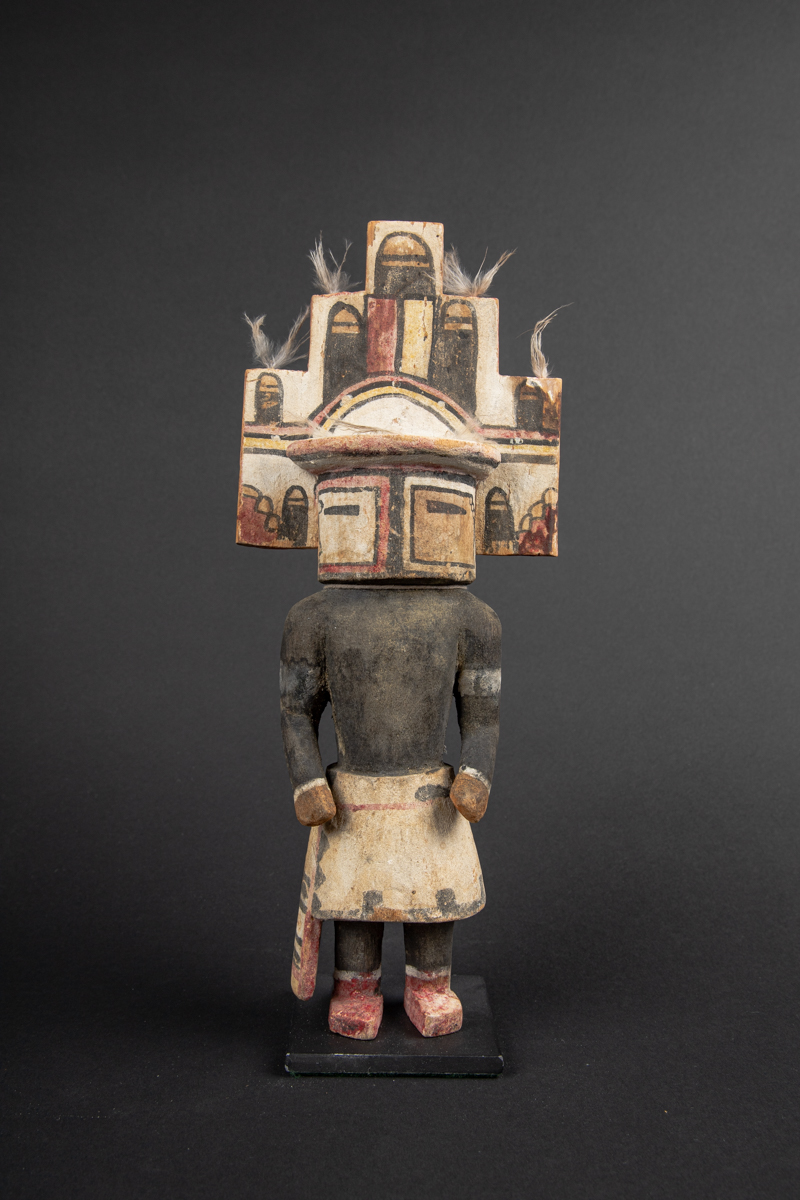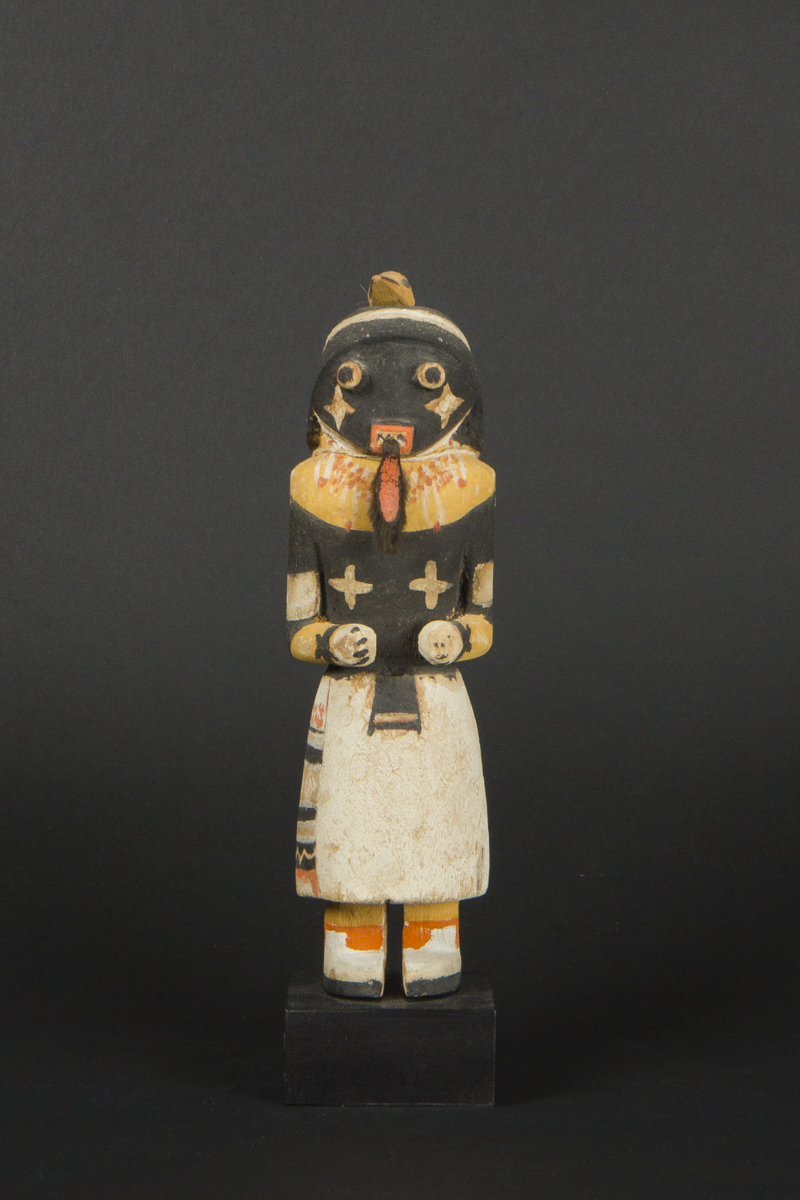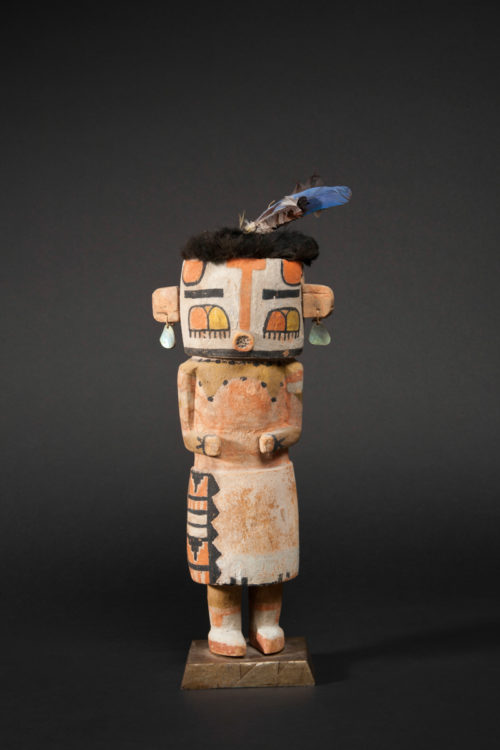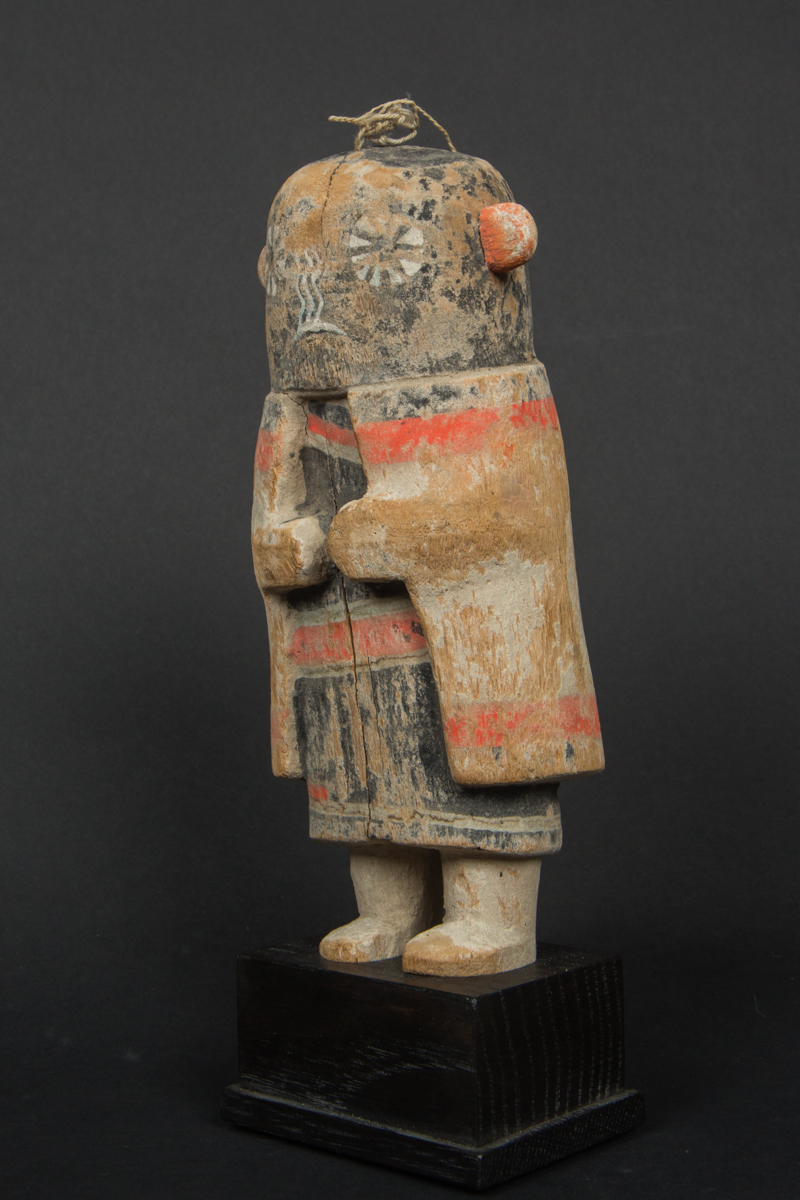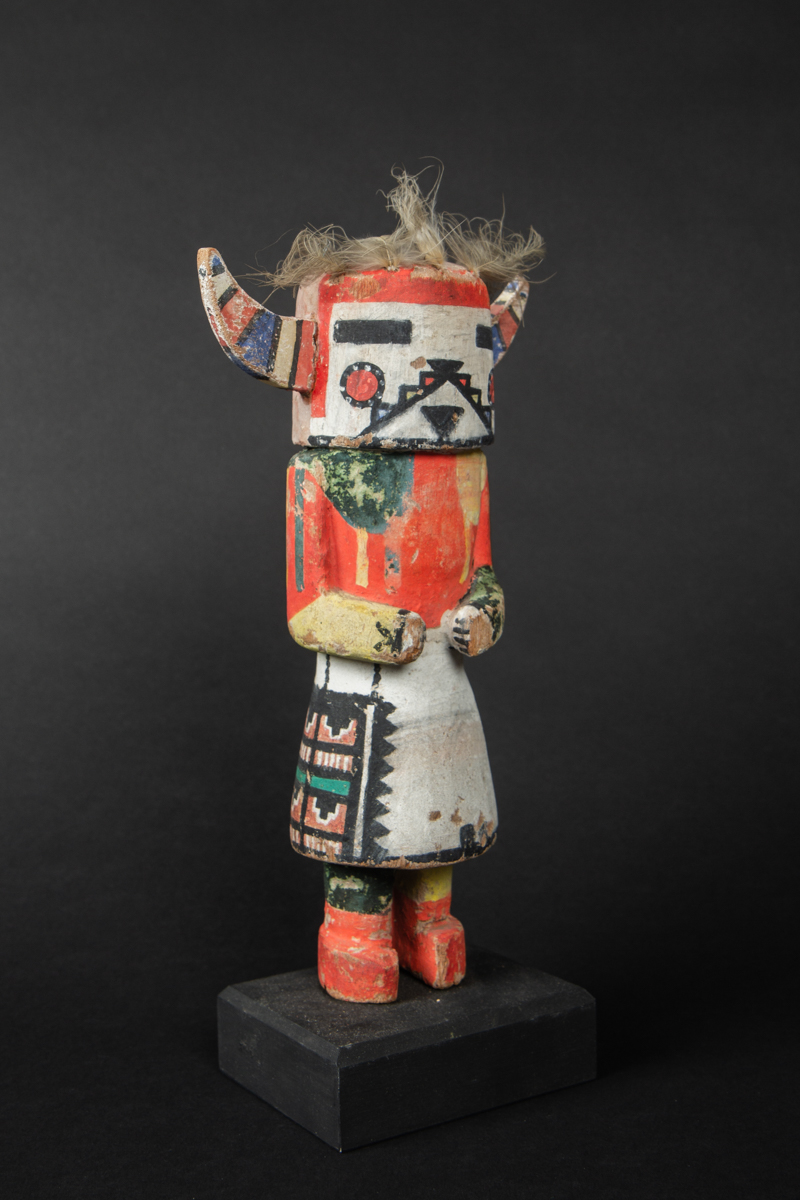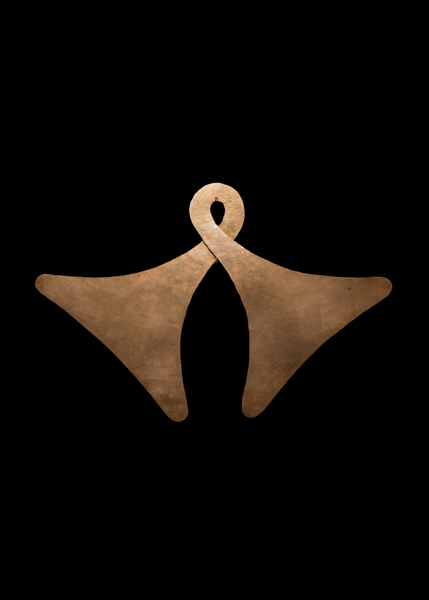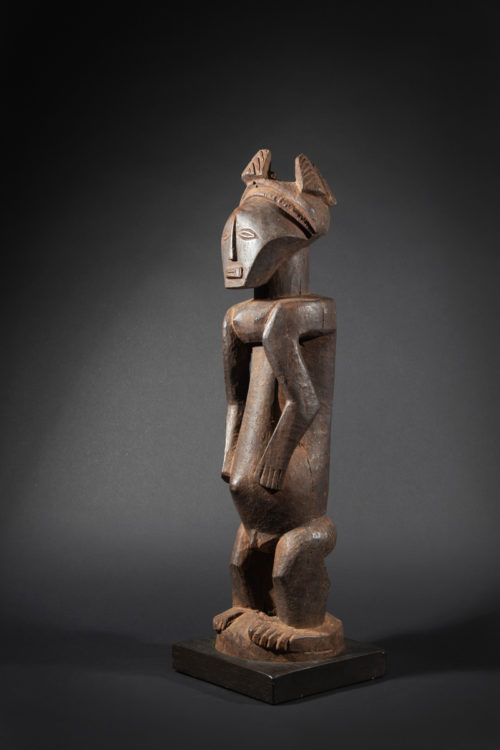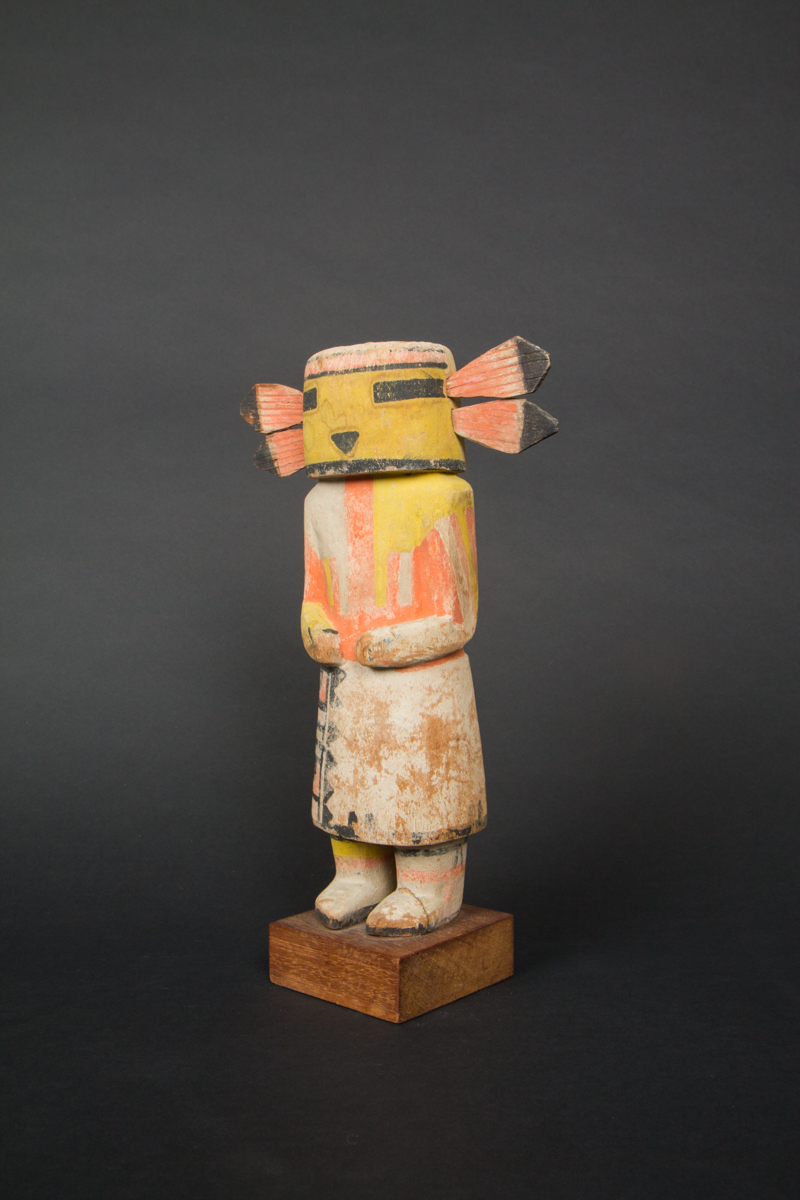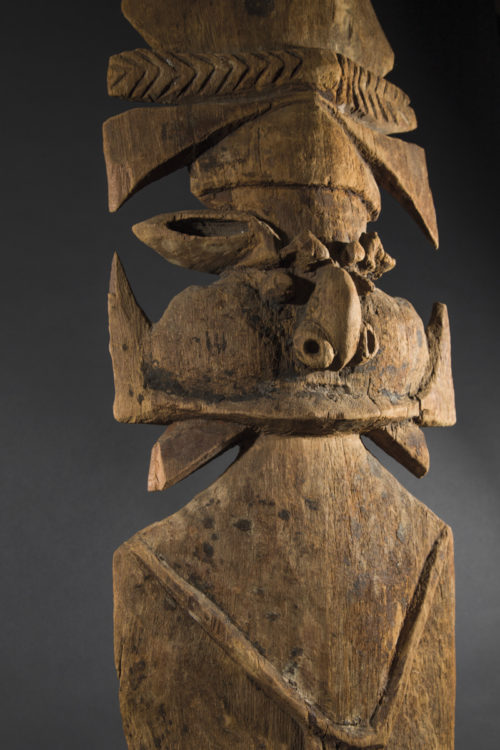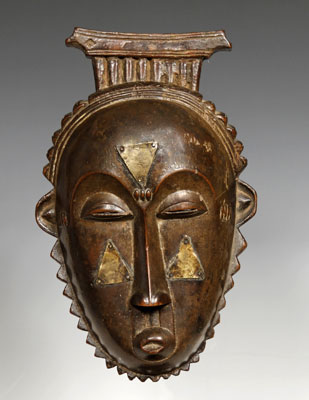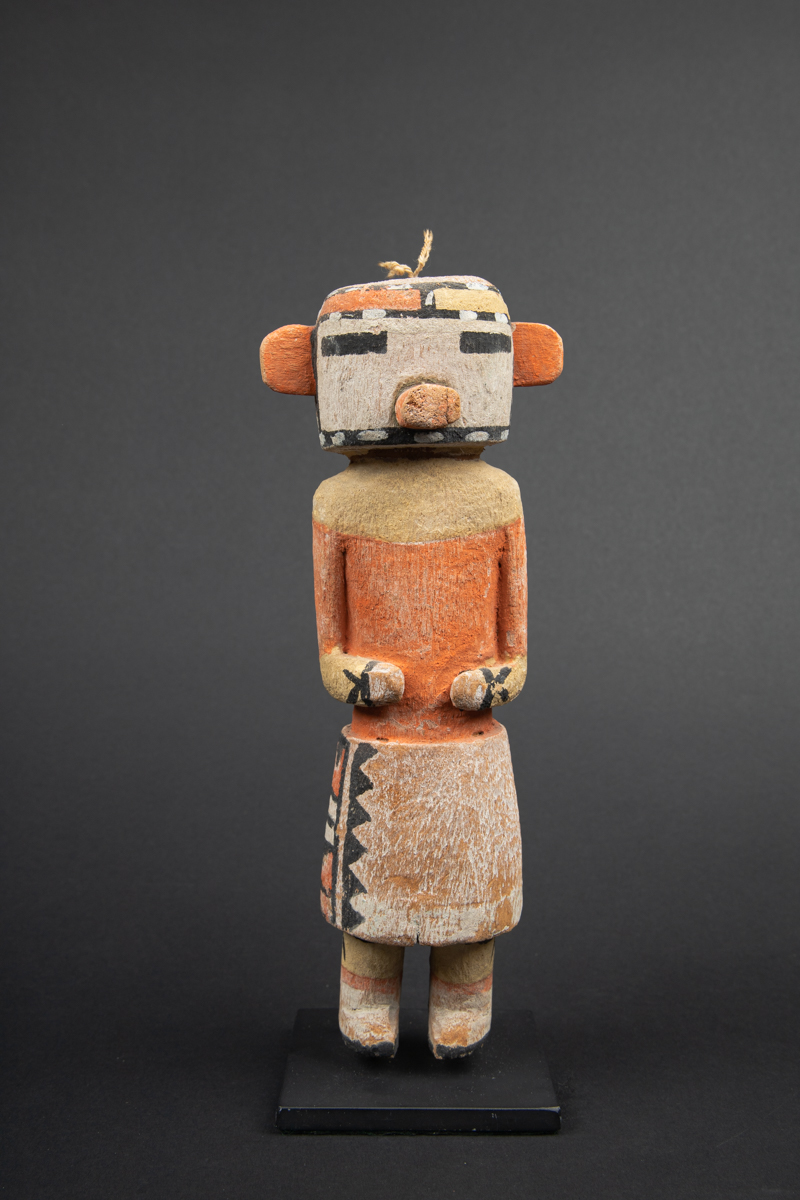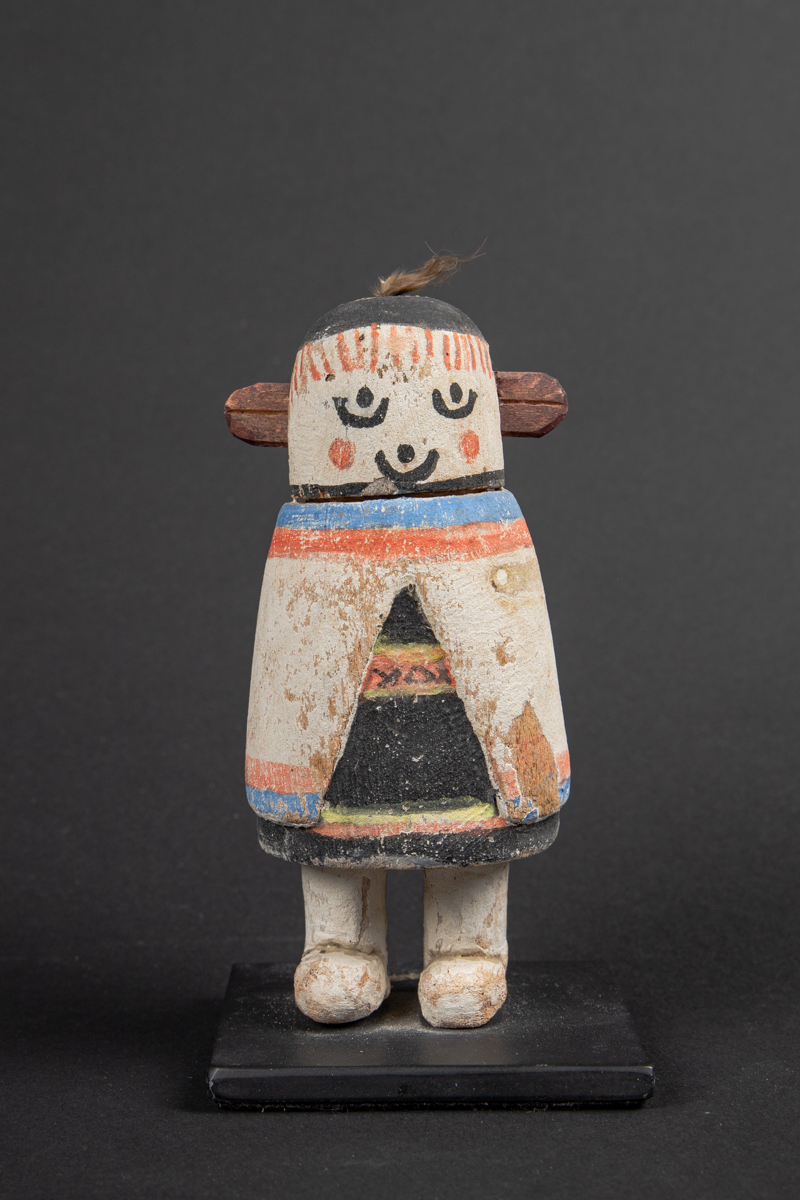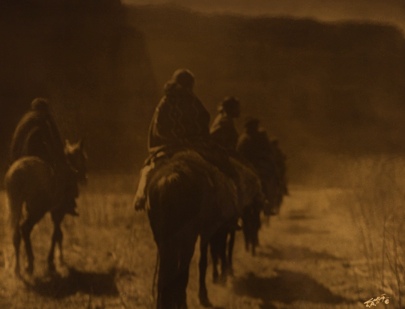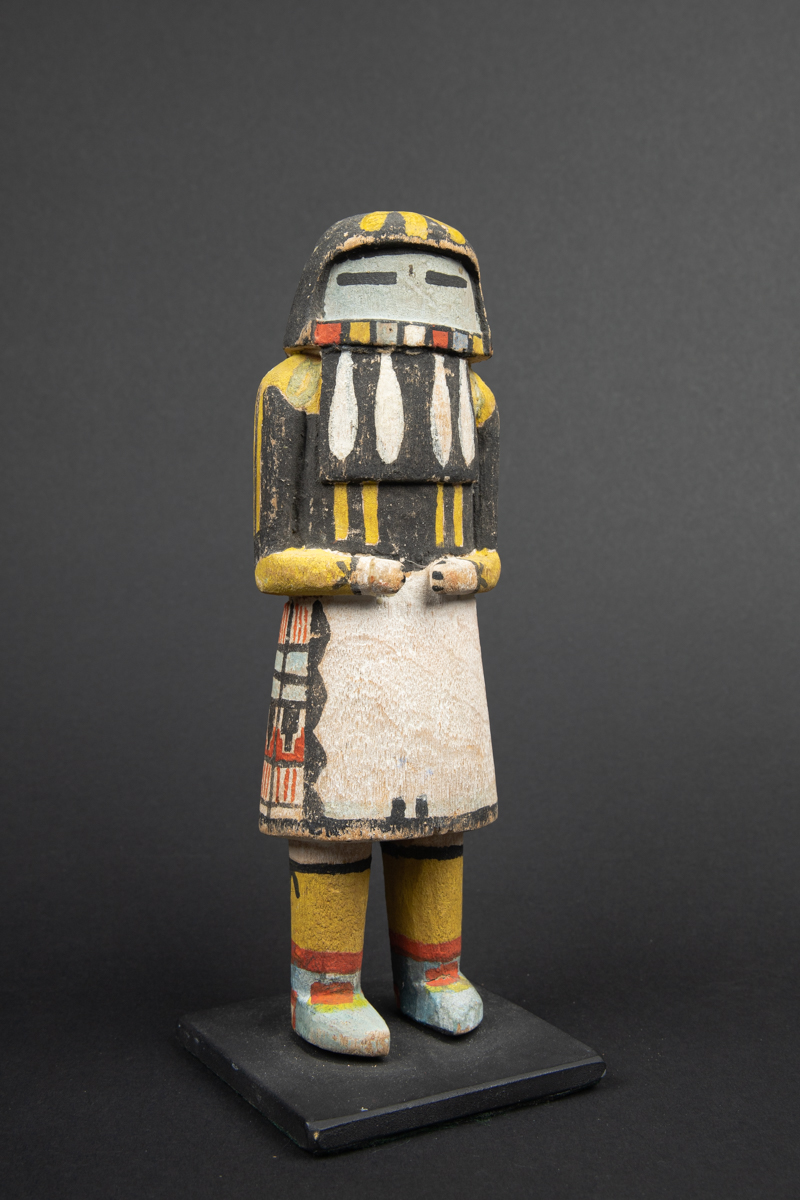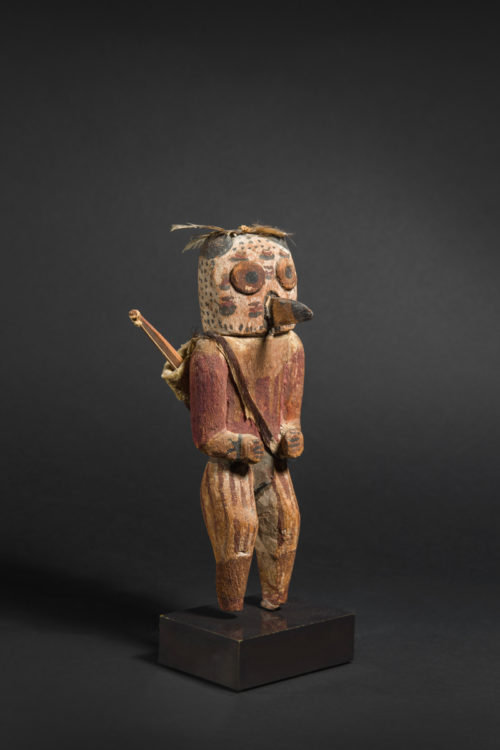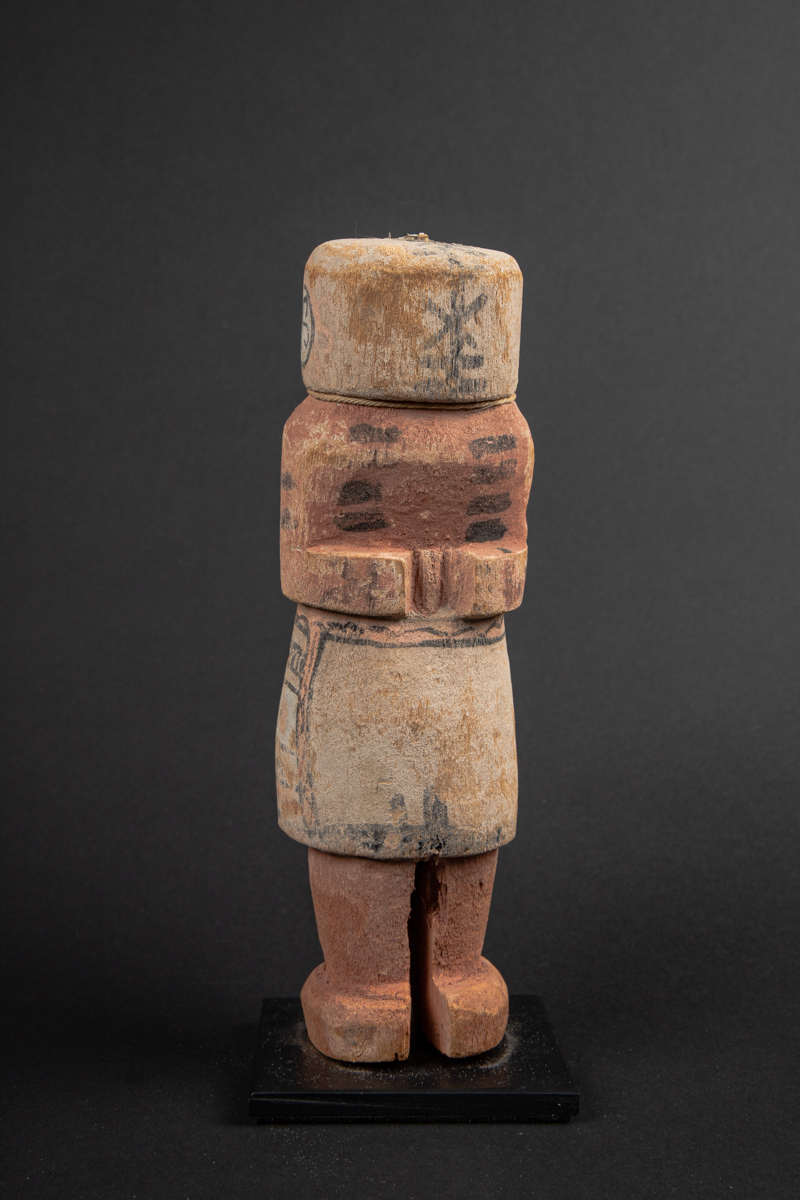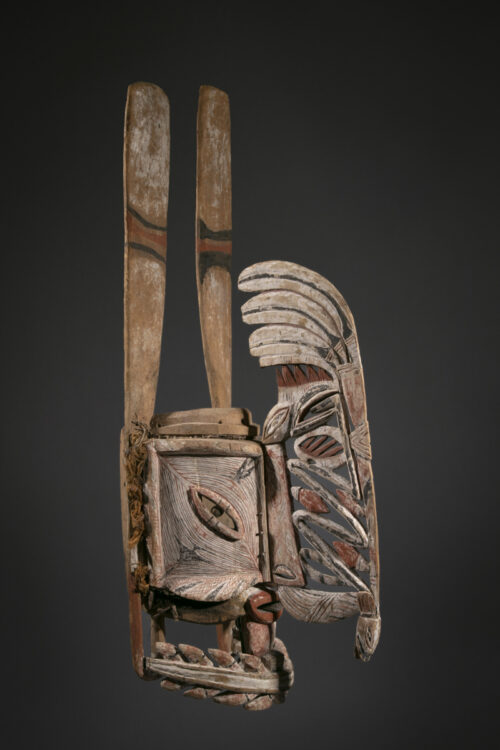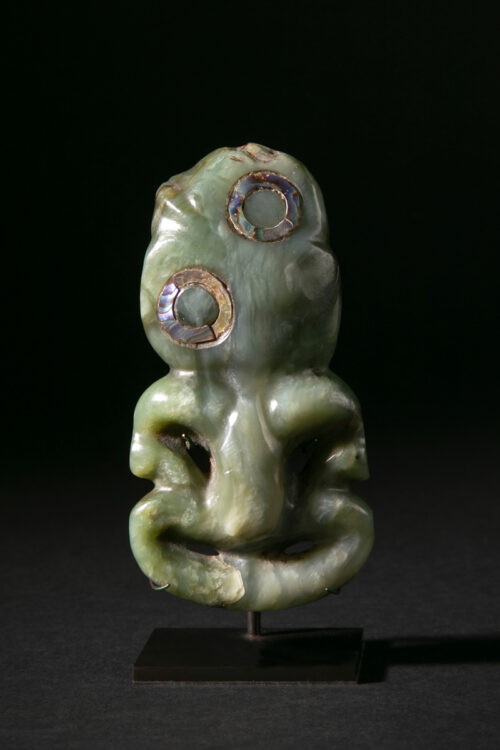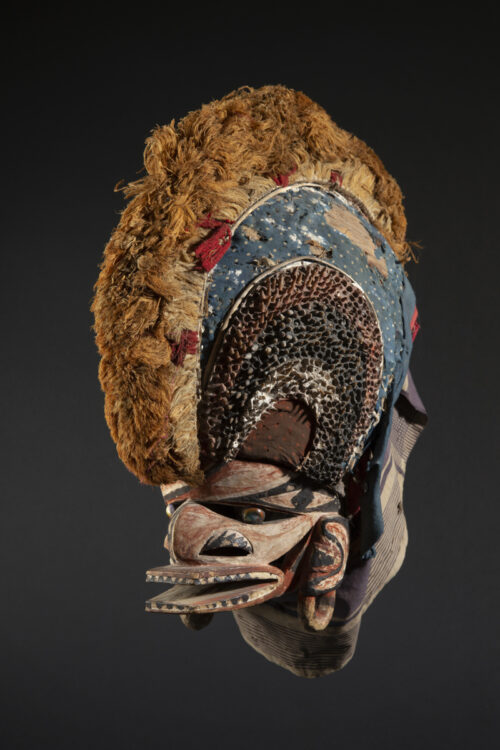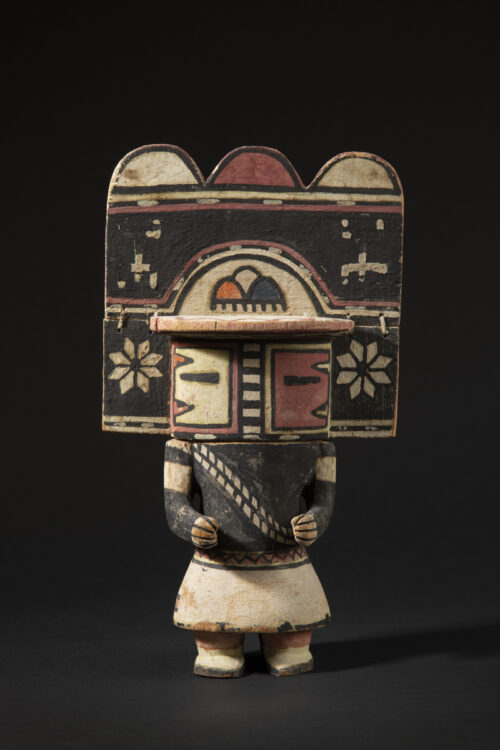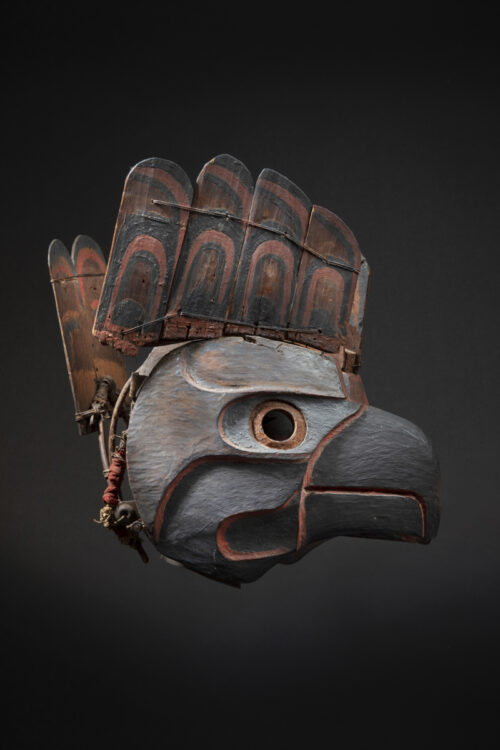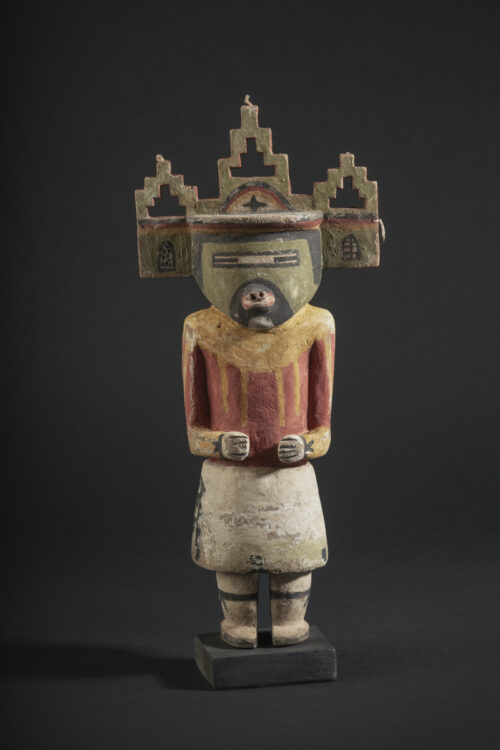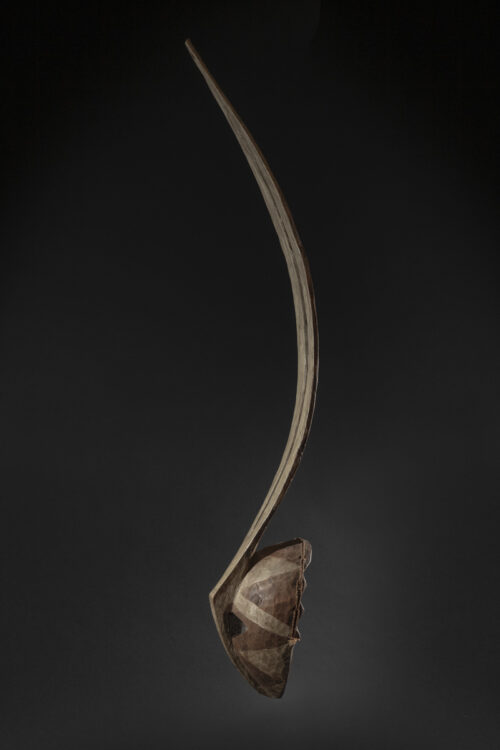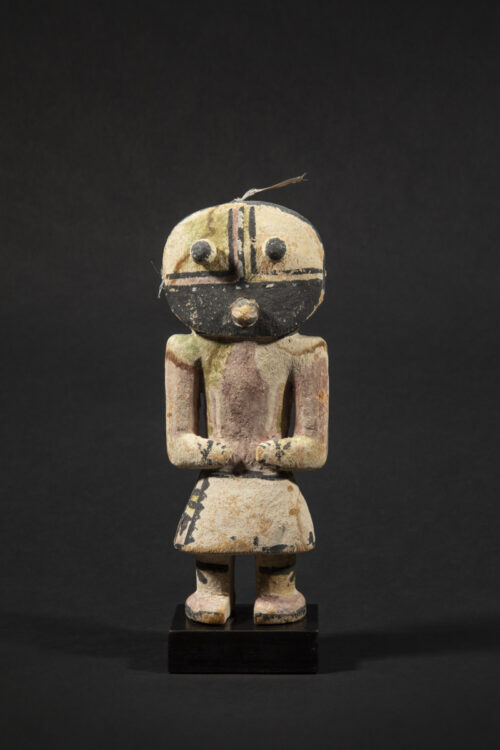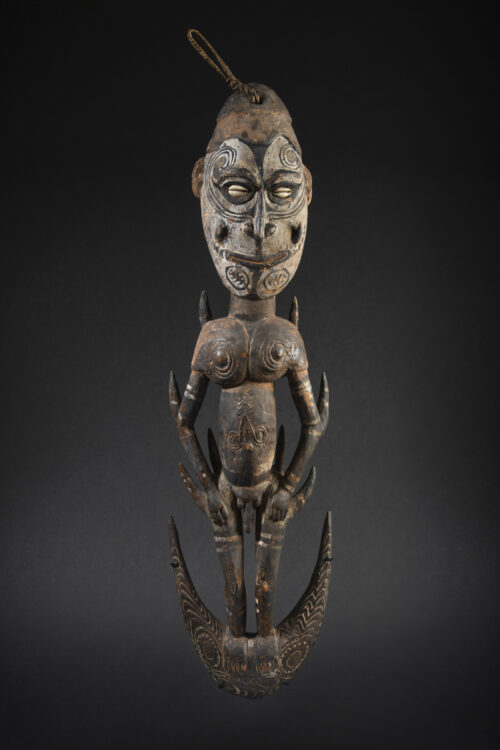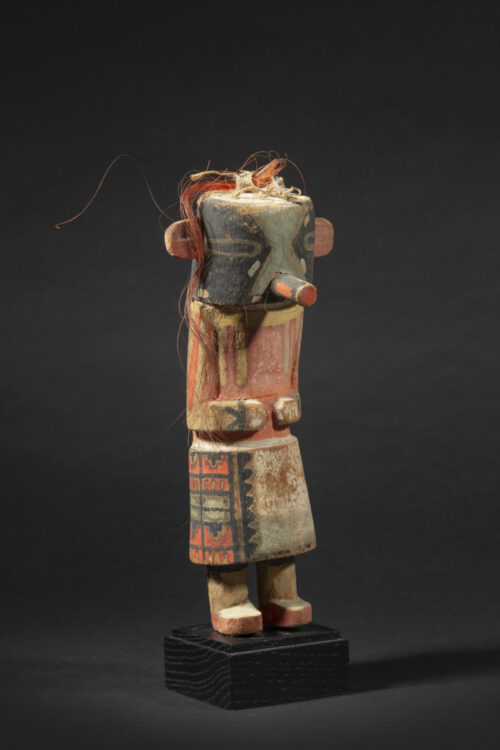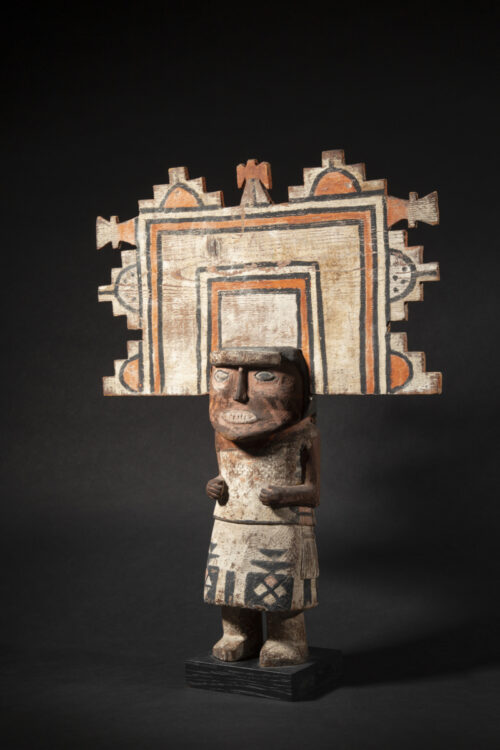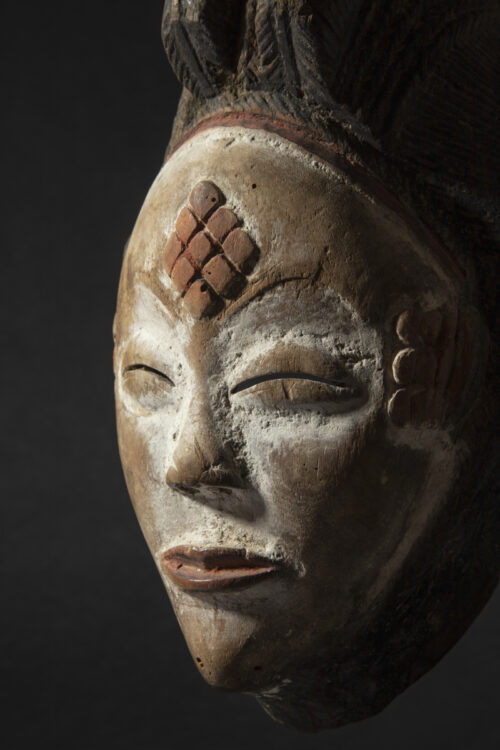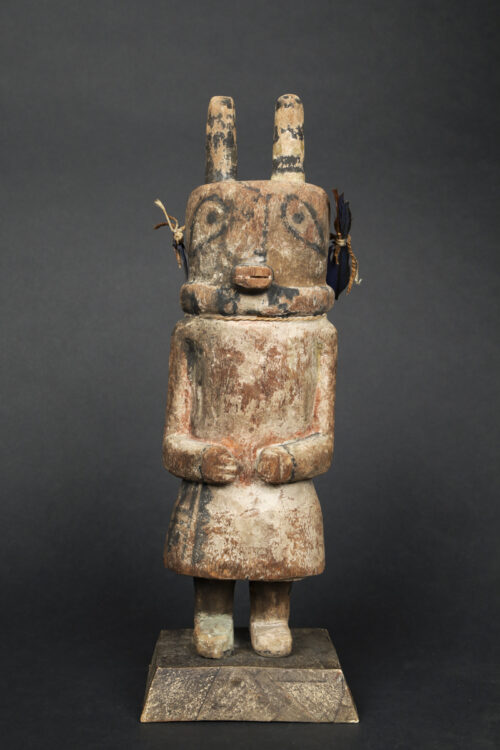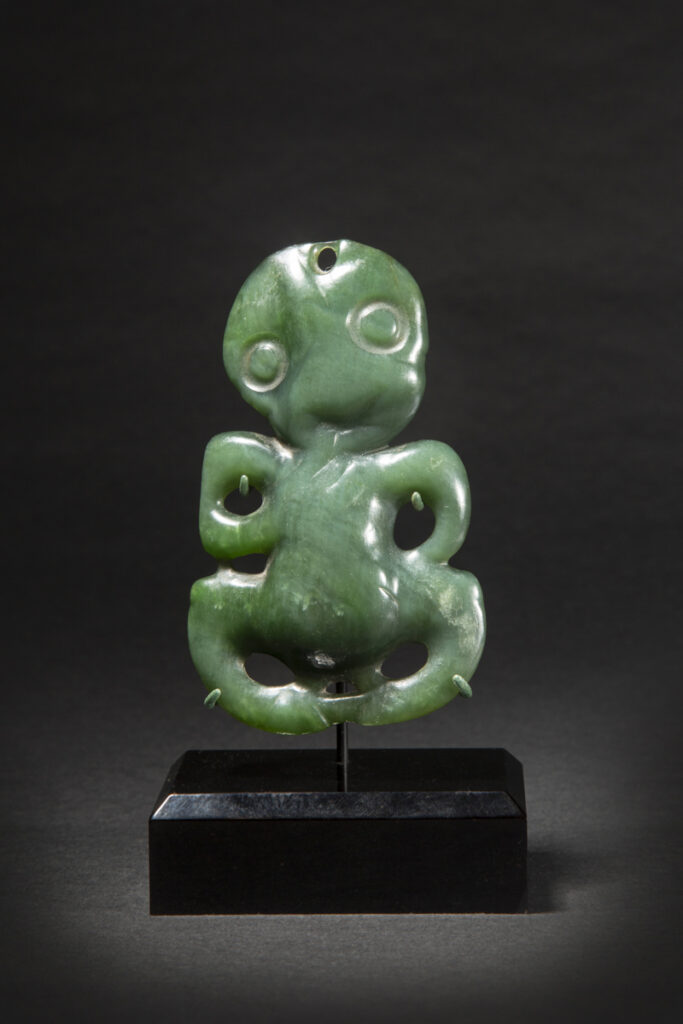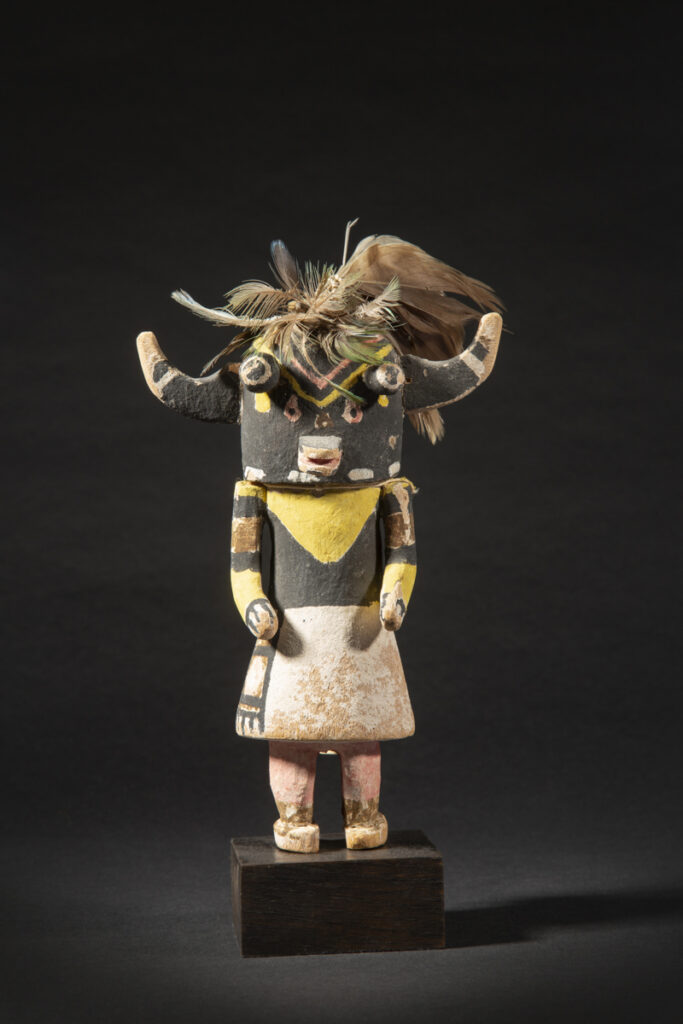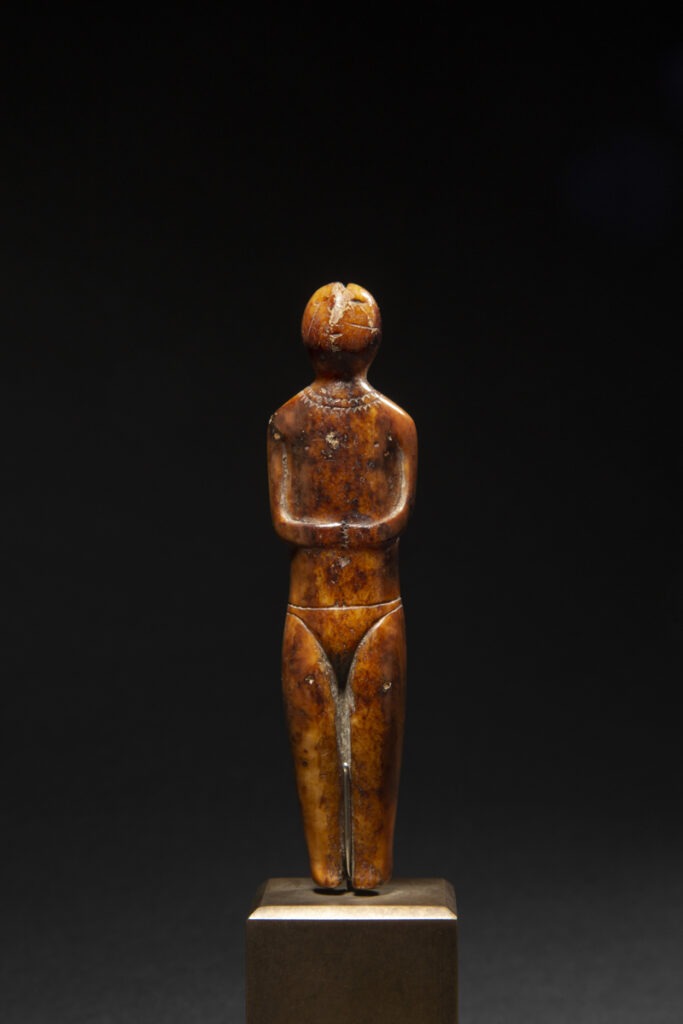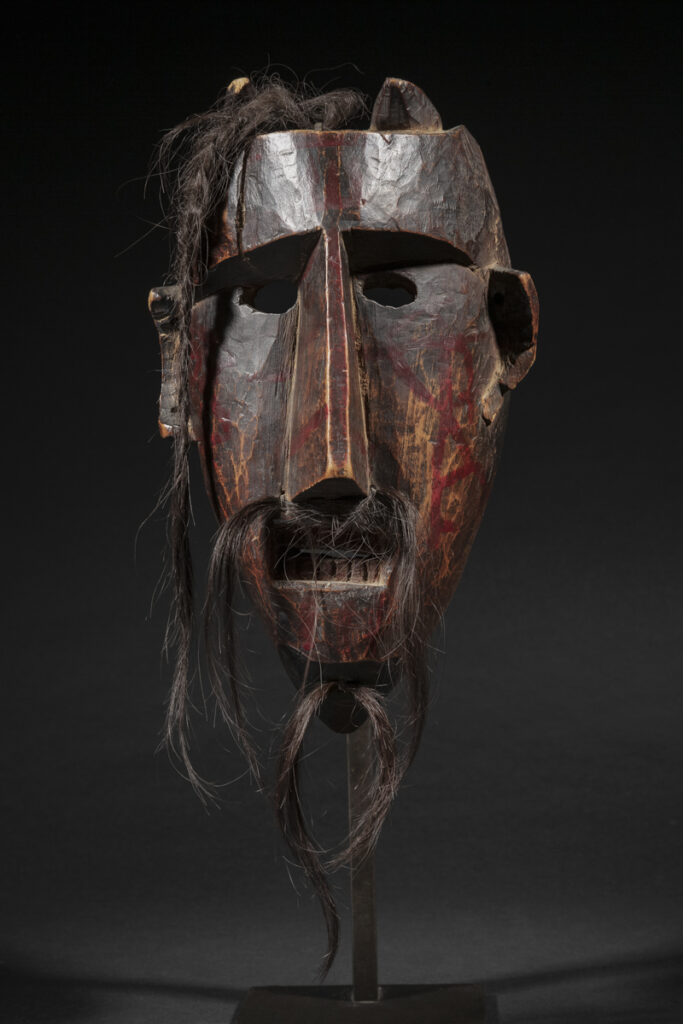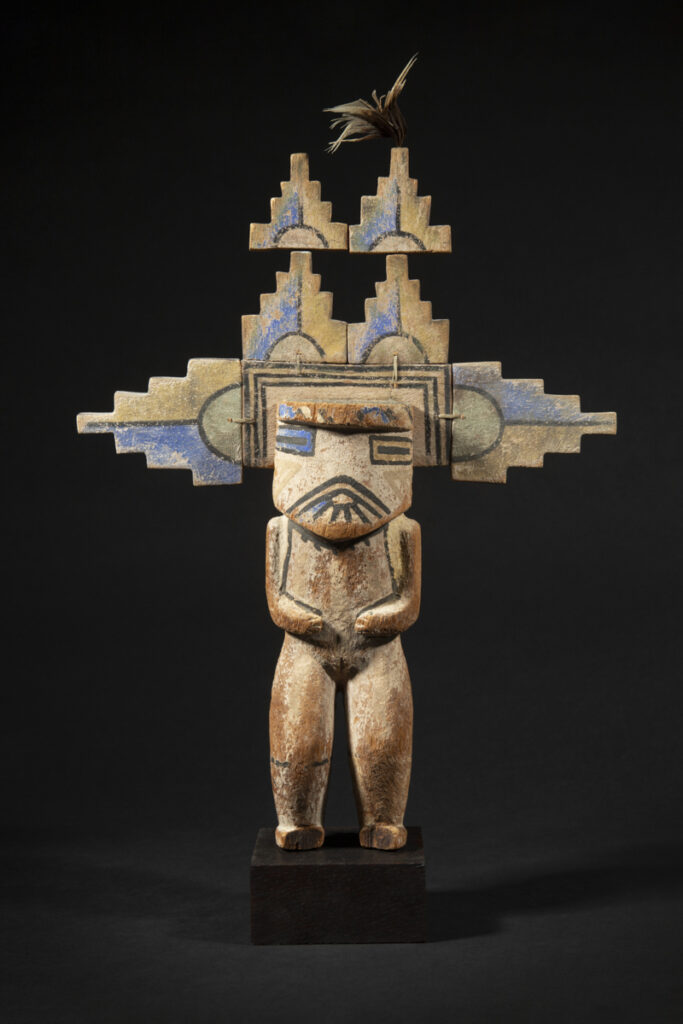Archives | Alaska
Inupiaq Mask
Alaska
Inupiaq shaman mask (Eskimo)
King Island
Carved wood
19th century
Height: 8 in. (20.5 cm)
Ex private collection, New York
Published: Voyages… From the North Pacific to the South Pacific in the wake of Captain Cook, 2019
Sold
In 1899, Edward W. Nelson traveled to Ugiuvak, or King Island off the coast of the Seward Peninsula in the Bering Strait, and studied the culture and art of the region (The Eskimo about Bering Strait in Annual Report, Vol. XVIII, Part. 1, Bureau of American Ethnology Smithsonian Institution, 1899).
King Island dancers, dressed in masks and special regalia for many ceremonial events including the Walrus Dance, Wolf Dance, Polar Bear Dance, and other performances held in the ceremonial house. Every performance was tied to specific myths or songs. Although it is unknown in which dance or ceremony the mask presented here may have been used, it is possible it was intended to ask the spirits for a bountiful harvest of sea mammals in a fall, winter or spring harvest or to thank the animals who had given themselves up to the hunters in the past season. Sea mammals, and most notably seals, hunted by King Islanders from kayaks with harpoons and spears and with nets, were of utmost importance and provided for many necessities including food, sinew for sewing, oil for burning for warmth and cooking, hides for clothing including parkas, breeches, mittens, and mukluks, gut for parkas, rawhide for umiaks and kayaks, trade goods, and more.
This Inupiaq mask perfectly illustrates the aesthetic qualities of the archaic art of the extreme Far North.
The face features are remarkably rendered on this naturalist portrait with. A magnetic presence emanates from this King Island mask.
The form of the fluke of a whale above the nasal ridge is probably a shamanic reference. This only reinforces the aura of mystery surrounding this ancient mask.
King Island dancers, dressed in masks and special regalia for many ceremonial events including the Walrus Dance, Wolf Dance, Polar Bear Dance, and other performances held in the ceremonial house. Every performance was tied to specific myths or songs. Although it is unknown in which dance or ceremony the mask presented here may have been used, it is possible it was intended to ask the spirits for a bountiful harvest of sea mammals in a fall, winter or spring harvest or to thank the animals who had given themselves up to the hunters in the past season. Sea mammals, and most notably seals, hunted by King Islanders from kayaks with harpoons and spears and with nets, were of utmost importance and provided for many necessities including food, sinew for sewing, oil for burning for warmth and cooking, hides for clothing including parkas, breeches, mittens, and mukluks, gut for parkas, rawhide for umiaks and kayaks, trade goods, and more.
This Inupiaq mask perfectly illustrates the aesthetic qualities of the archaic art of the extreme Far North.
The face features are remarkably rendered on this naturalist portrait with. A magnetic presence emanates from this King Island mask.
The form of the fluke of a whale above the nasal ridge is probably a shamanic reference. This only reinforces the aura of mystery surrounding this ancient mask.
Publication
Explore the entire collection
